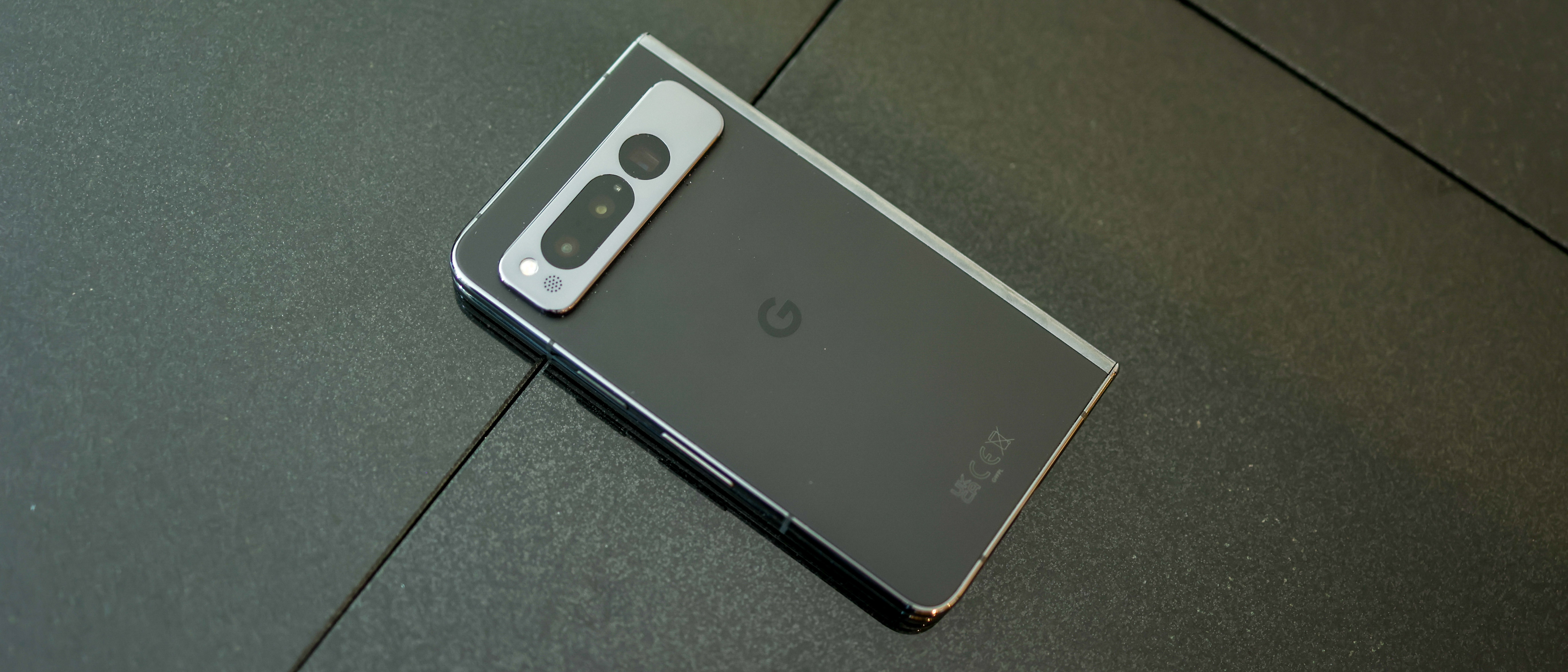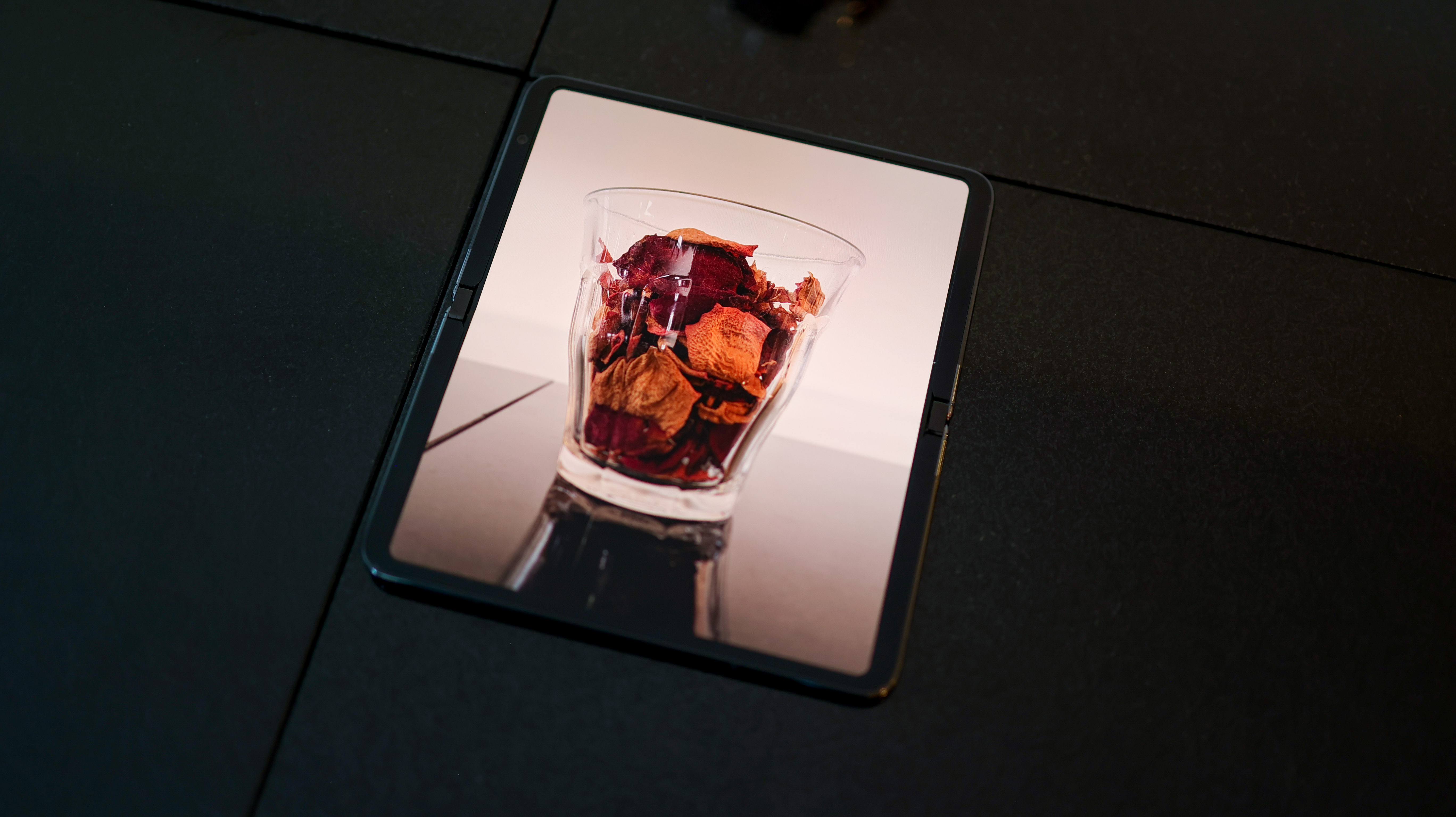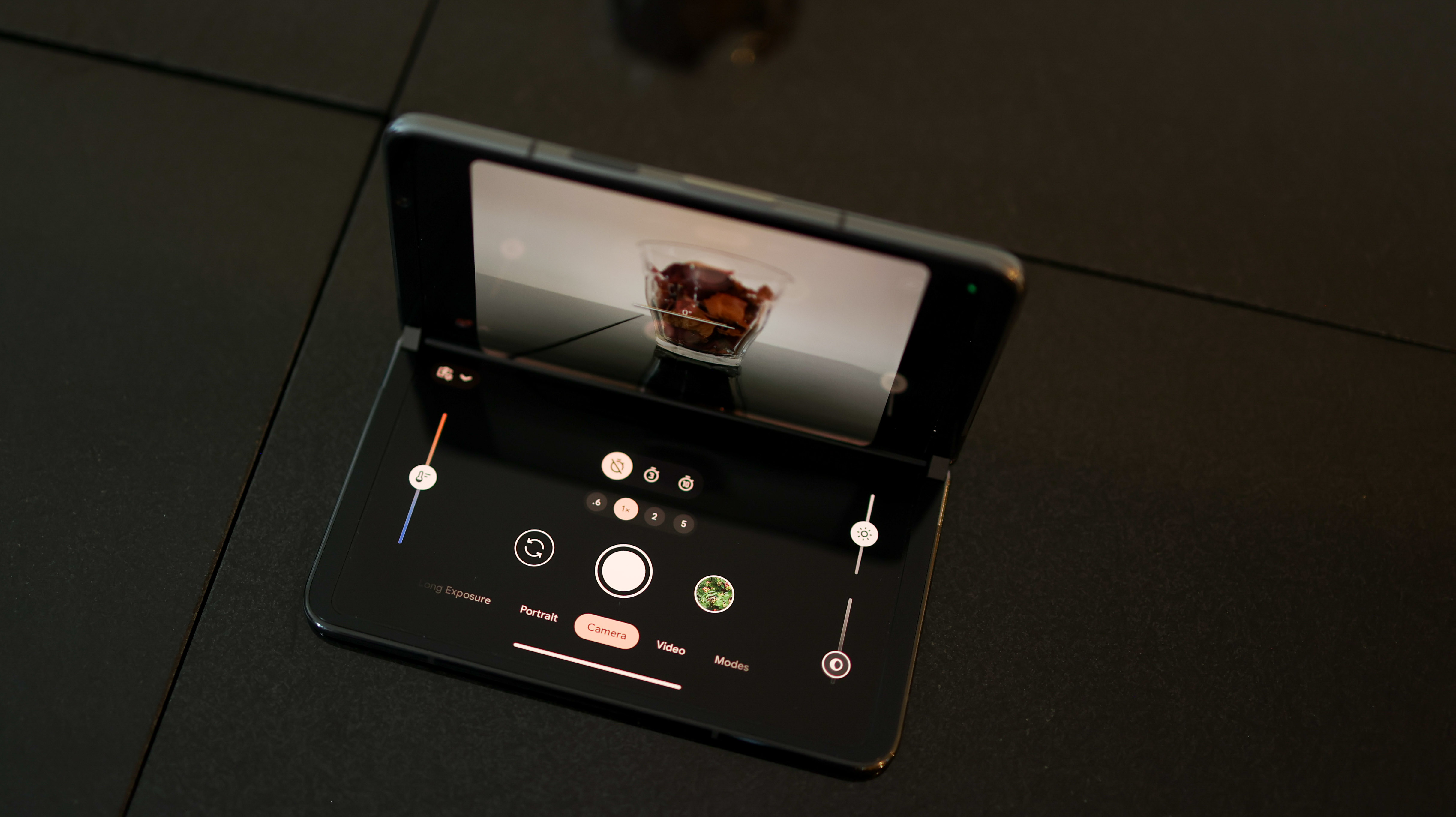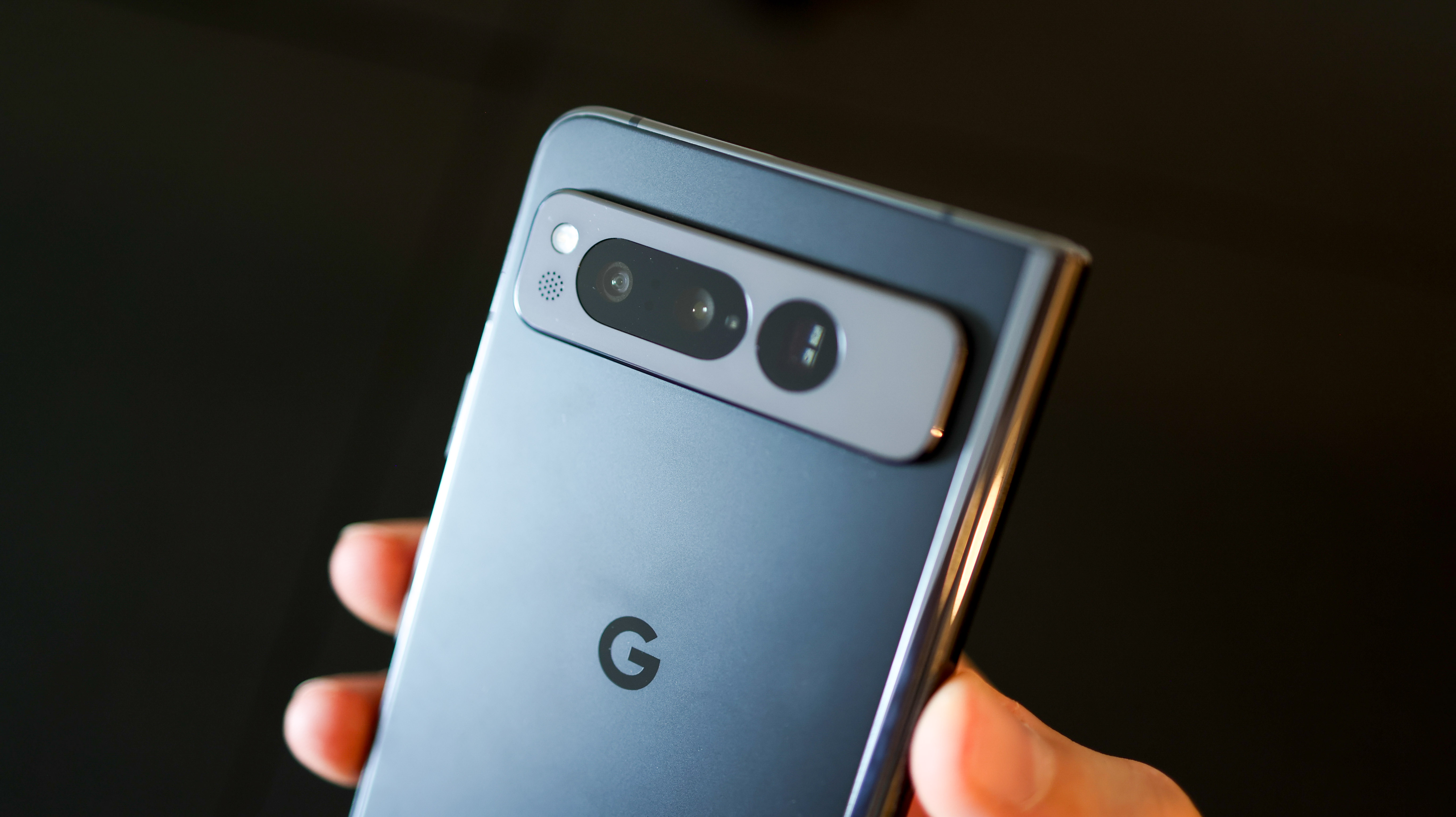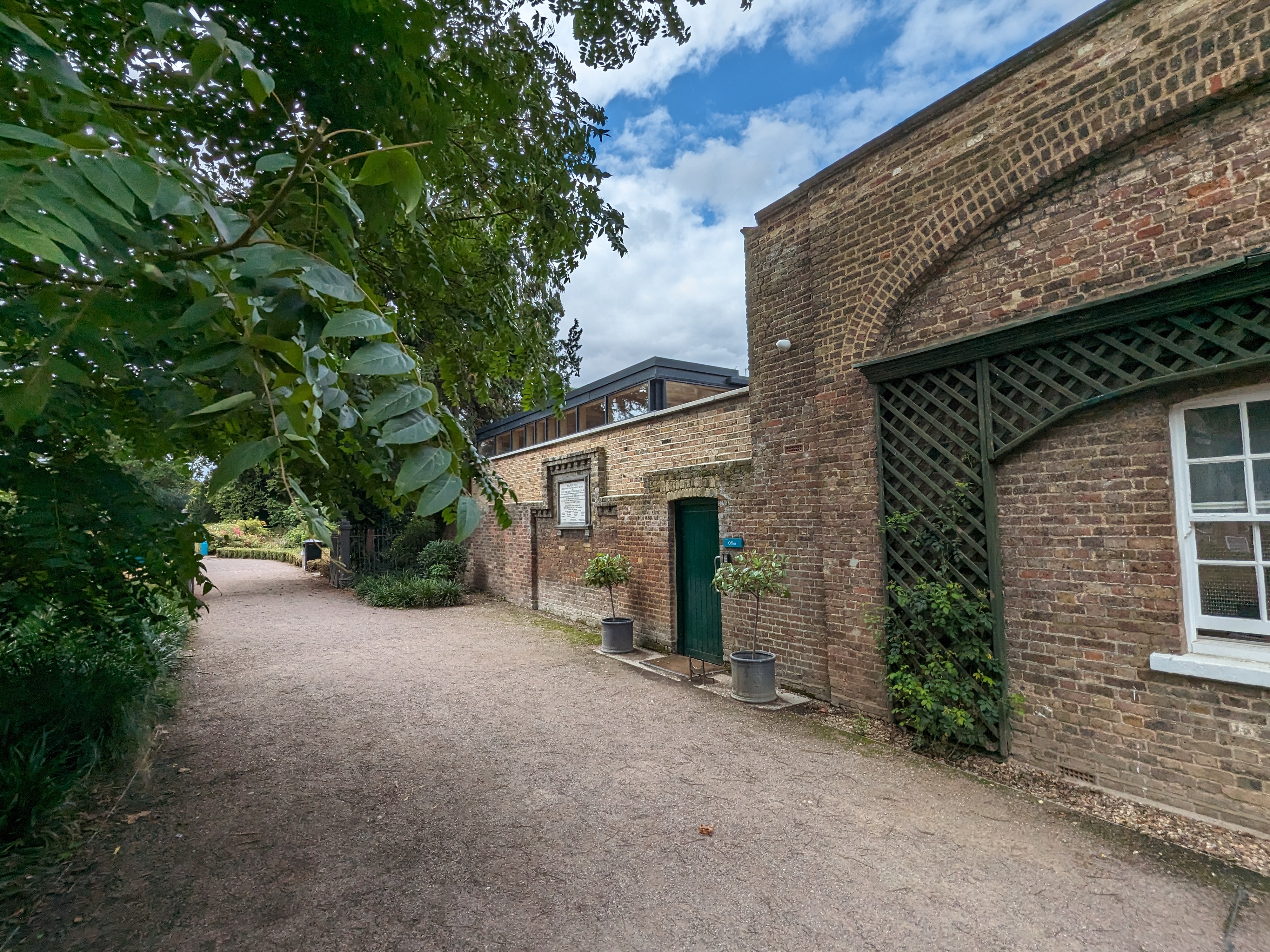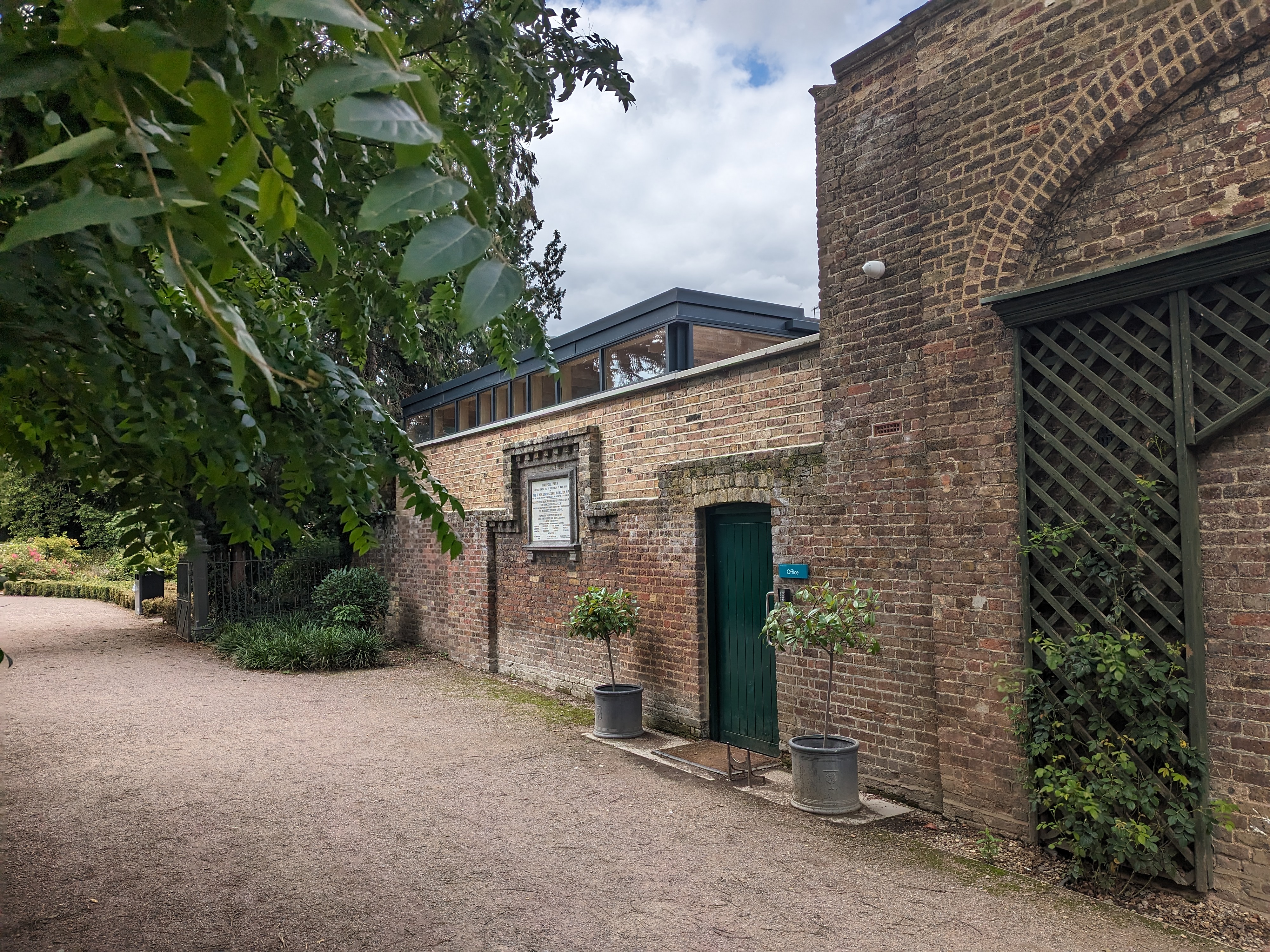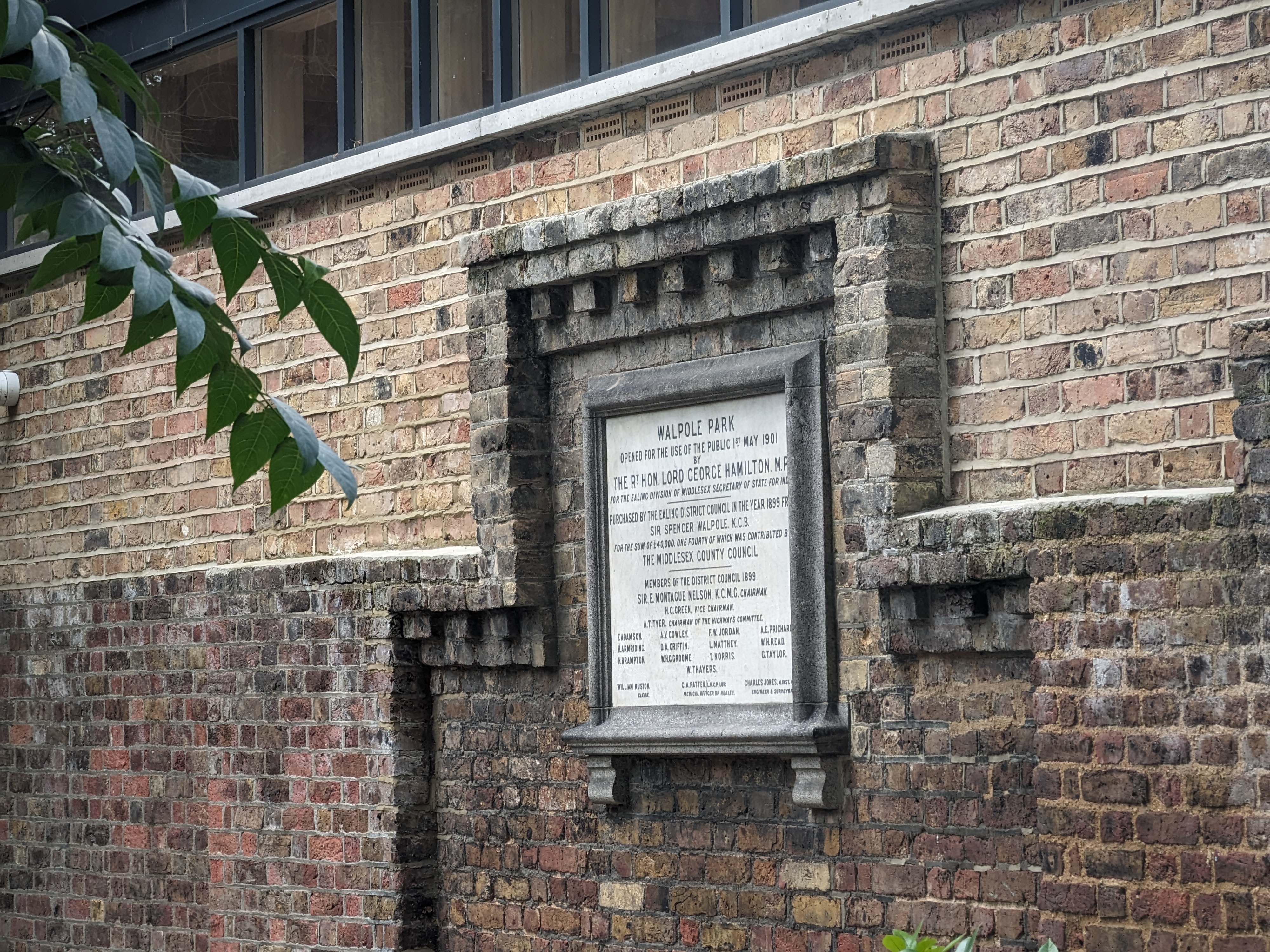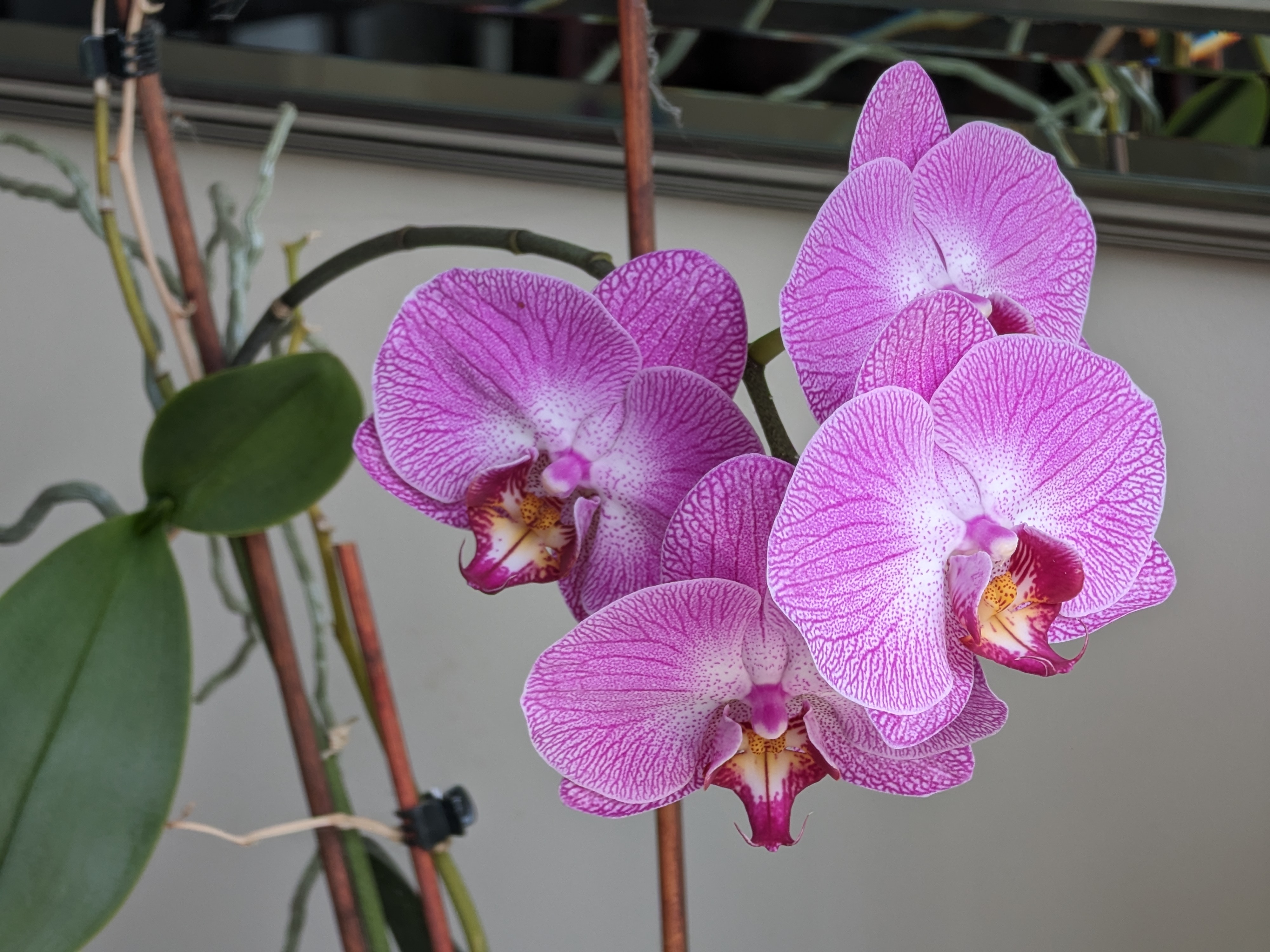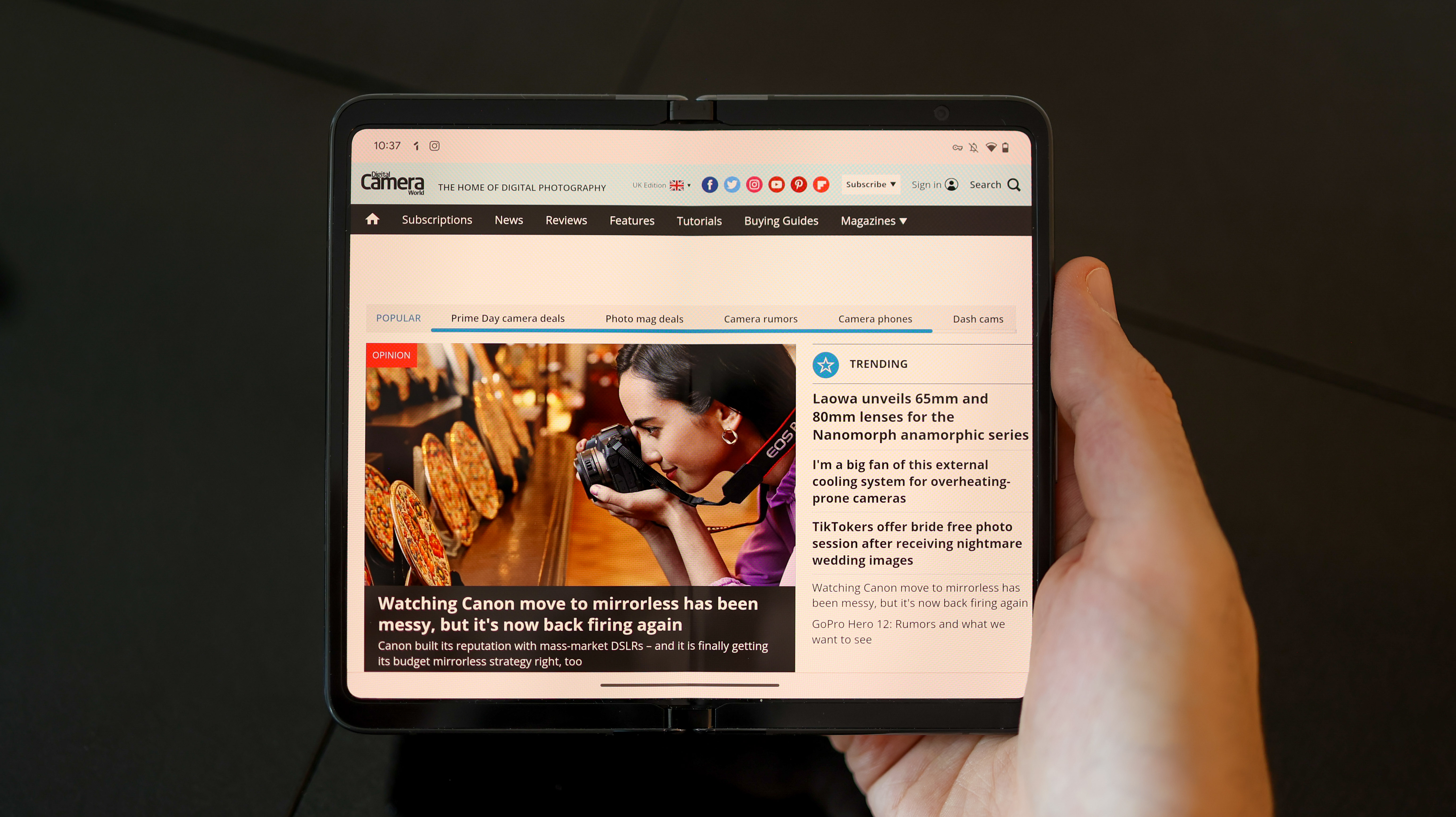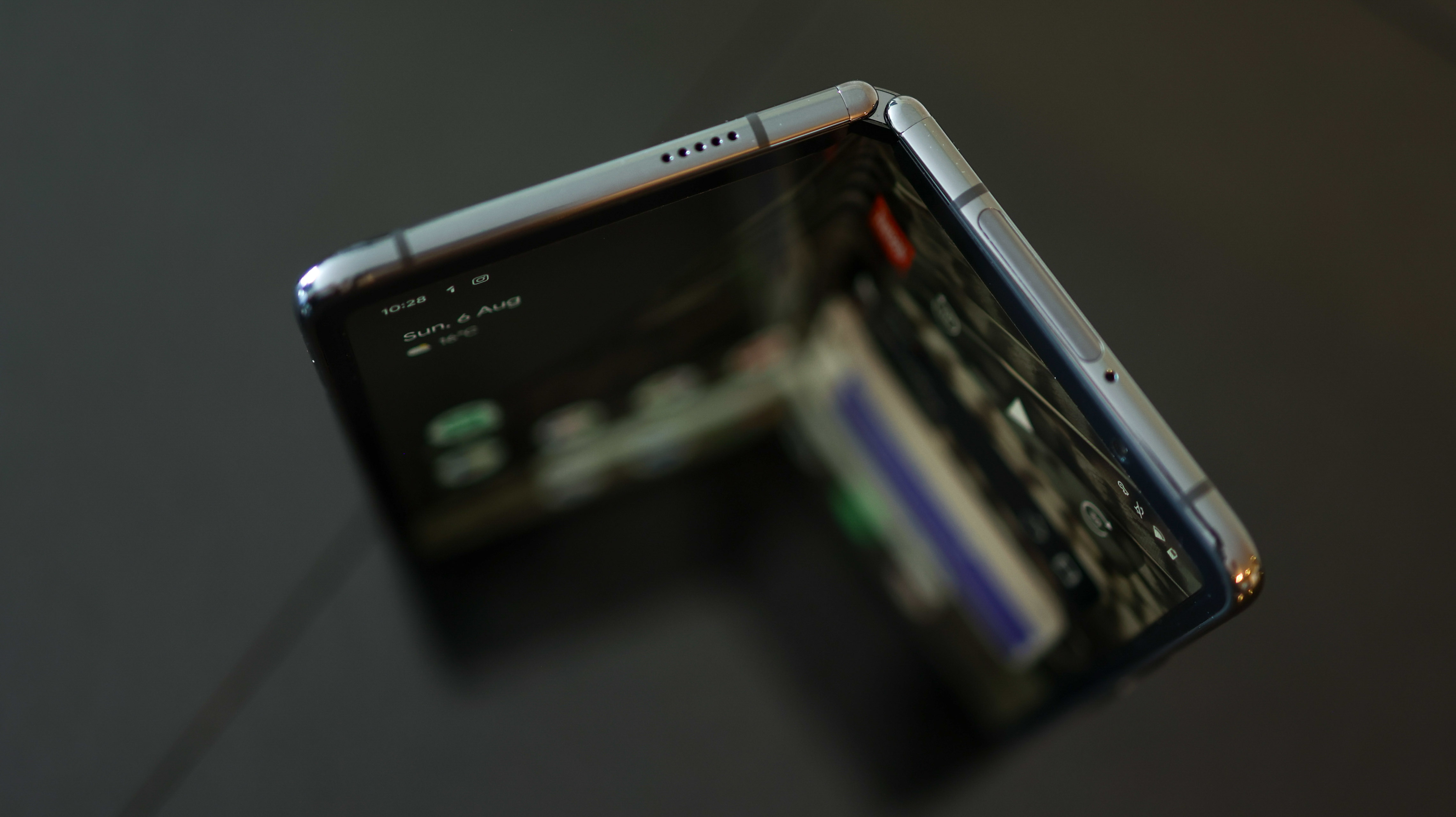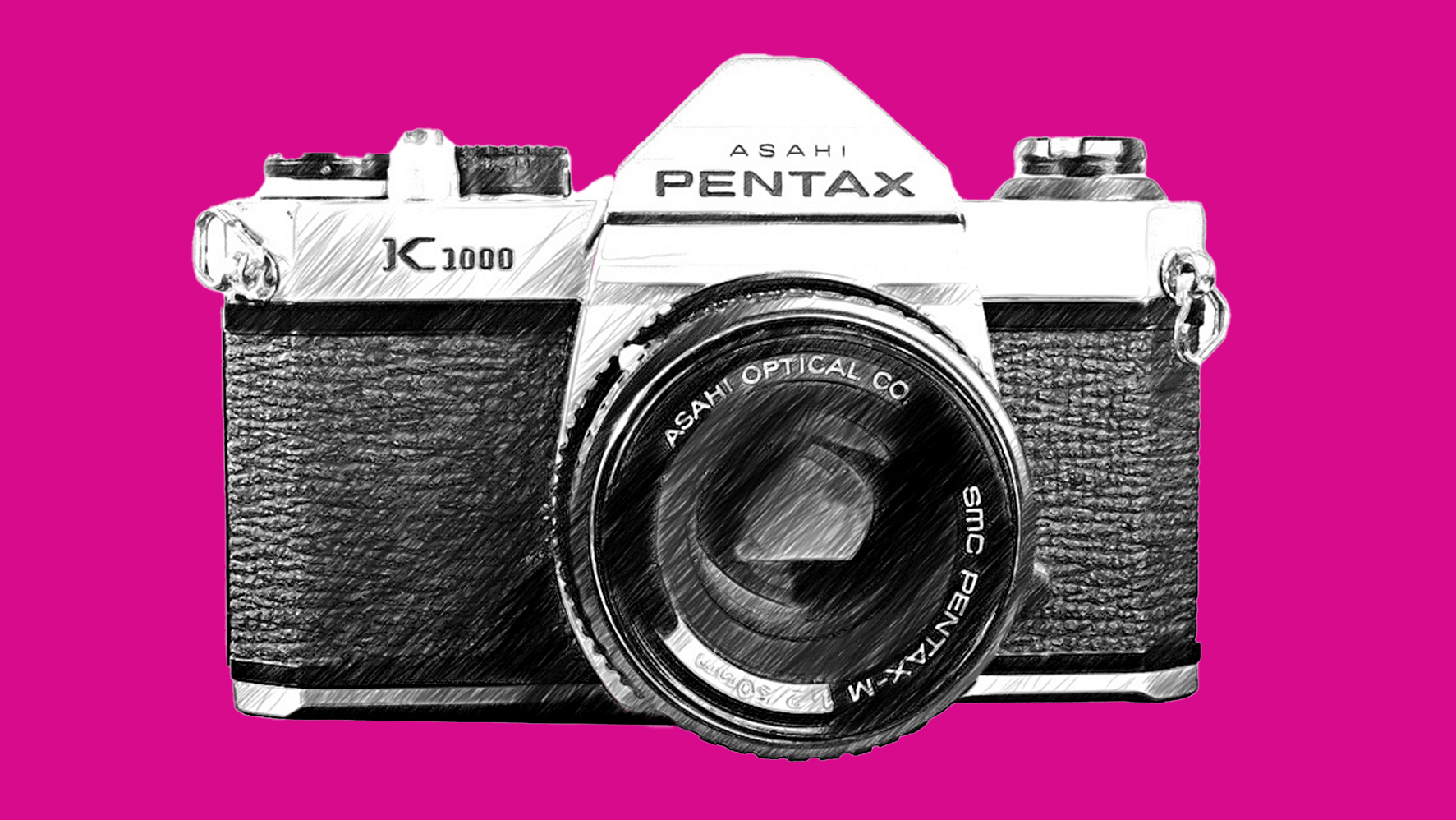Digital Camera World Verdict
The Google Pixel Fold has a lot going for it: the most balanced camera system of any mainstream foldable; its front screen is much more comfortable to use than that of the Z Fold 5, the part-folded inner screen is great for watching 16:9 video on, and it's a taster of what a foldable stock Android experience looks like. So while a fair few shortcomings hold it back, and its price is eye-watering, it's still a viable alternative to Samsung's Z Fold line and a welcome addition to the foldable space.
Pros
- +
Comfortable cover screen size
- +
Relatively strong camera system
- +
Smooth performance and clean interface
- +
IPX8 water resistant
Cons
- -
Runs hot with demanding tasks
- -
Doesn't unfold completely flat
- -
No native manual camera support
- -
It's very expensive
Why you can trust Digital Camera World
The Google Pixel Fold launched a few months before Samsung announced the Galaxy Z Fold 5. In the past, Samsung hasn't had much big-screened folding competition, but 2023 changes that with the Honor Magic Vs, Huawei Mate X3, and, most notably, the Pixel Fold.
Generally speaking, foldables have compromised cameras. It's a simple question of space: they have moving parts, so need a hinge, and with two screens, there's less room for big camera sensors and fancy optics. So you can imagine our delight when Google announced the Pixel Fold.
Google's Pixels are known for their excellent cameras. They don't always have the best hardware, but thanks to balanced, nuanced photo processing, have historically been some of the easiest camera phones to recommend. The Google Pixel 7 Pro is one of the best flagship phones out now, and the Pixel 7ais a superb, lower-cost alternative.
• Read our guide to the best Android phone for photography
But while other Pixels leverage brilliant value to hammer home their appeal, the Pixel Fold is very expensive. So can Google's squat, pricey foldable win us over, or is Samsung's Z Fold line still the book-style foldable to beat?
Google Pixel Fold Review: Design
The Pixel Fold is a squat book-style foldable. Short and wide, its cover screen will fill a palm, though it isn't too much of a stretch for a thumb to reach all four corners. This closed shape means that it opens out to reveal a landscape big screen, unlike the Galaxy Z Fold 5 and its portrait foldable display. An interesting choice, and unsurprisingly, it comes with pros and cons.
Being significantly wider than the Galaxy Z Fold 5, it's super-comfortable to type on. The screen's about as wide as an iPhone 14 Pro Max, but shorter than an iPhone 14, a novel mix that takes us back a few years to the days of 16:9 phones.
The best camera deals, reviews, product advice, and unmissable photography news, direct to your inbox!
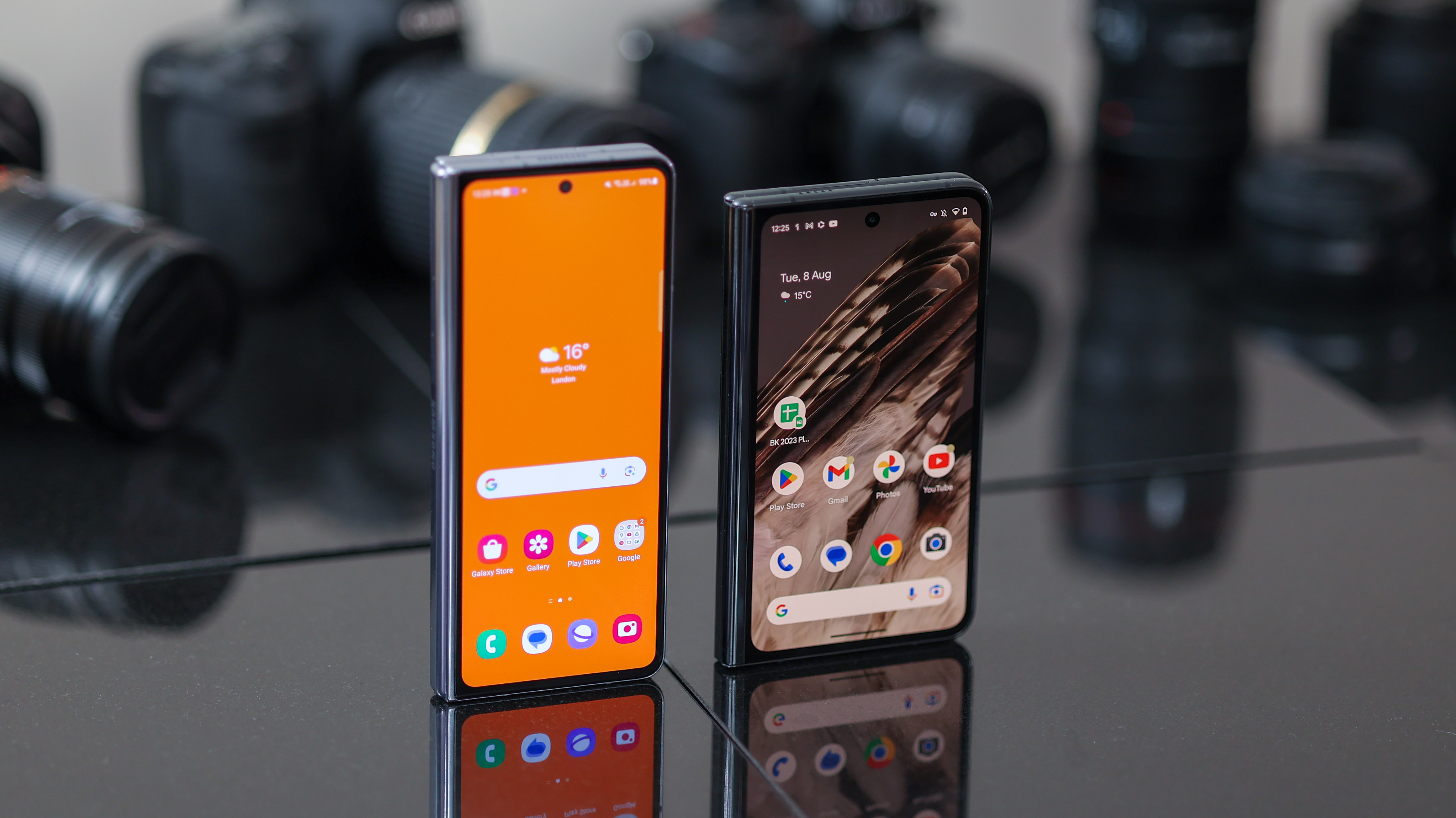
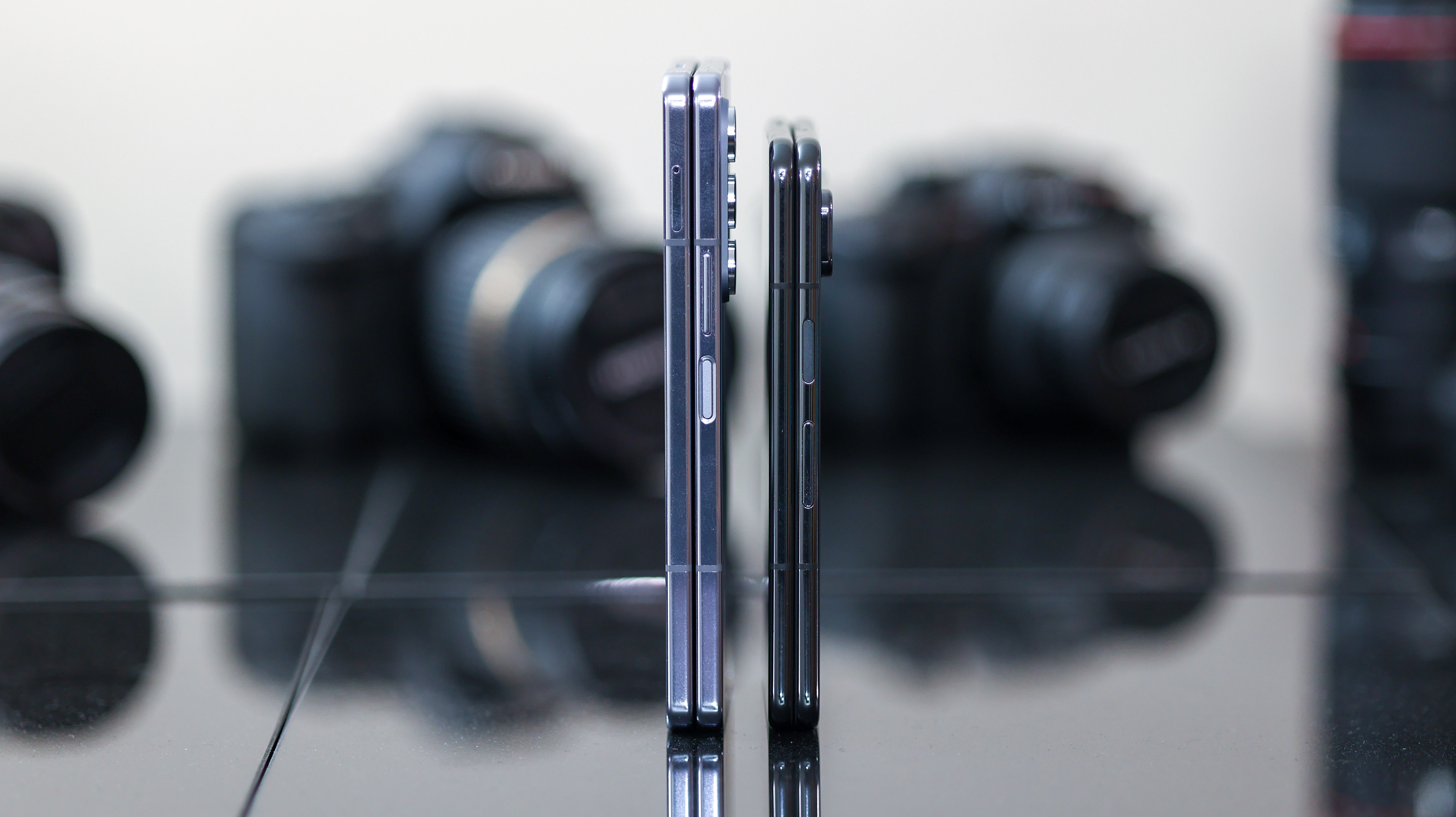
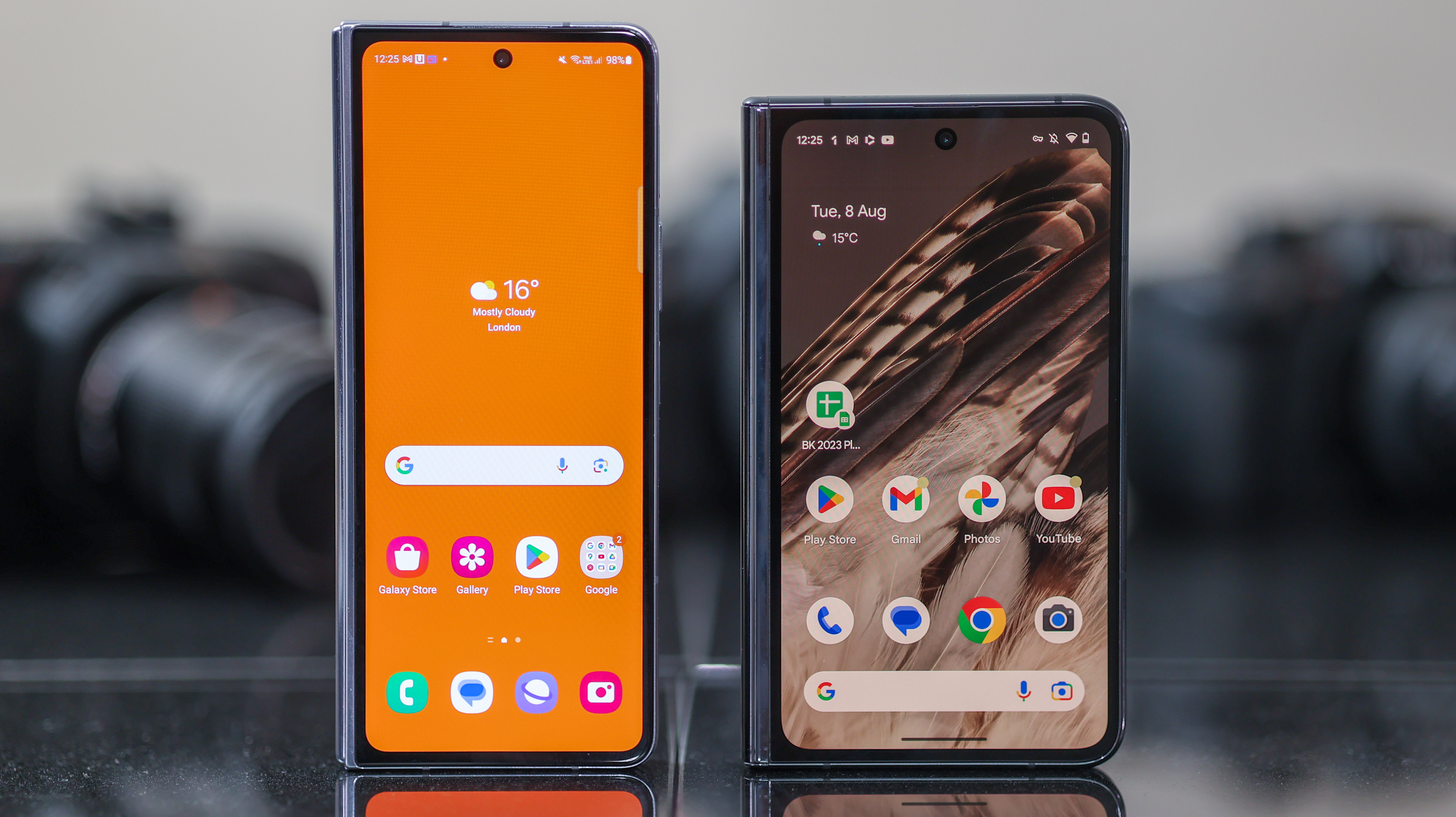
Weighing 283g, the Google Pixel Fold is significantly heavier than a traditional phone, and the 253g Samsung Galaxy Z Fold 5. Google did make it a little thinner, though; it closes flat, and its rounded, bulbous frame feels a bit more special than Samsung's slab-like phone.
When closed, the Pixel Fold's USB-C port and SIM tray are at the bottom. Buttons are on the right, and on the left is an uninterrupted hinge. Both sides are protected by Gorilla Glass Victus, with the cameras spread across a raised strip around the back.
When it's closed is when the Pixel Fold is at its best. It feels like a hefty but low-compromise candy bar phone with a novel screen aspect ratio.
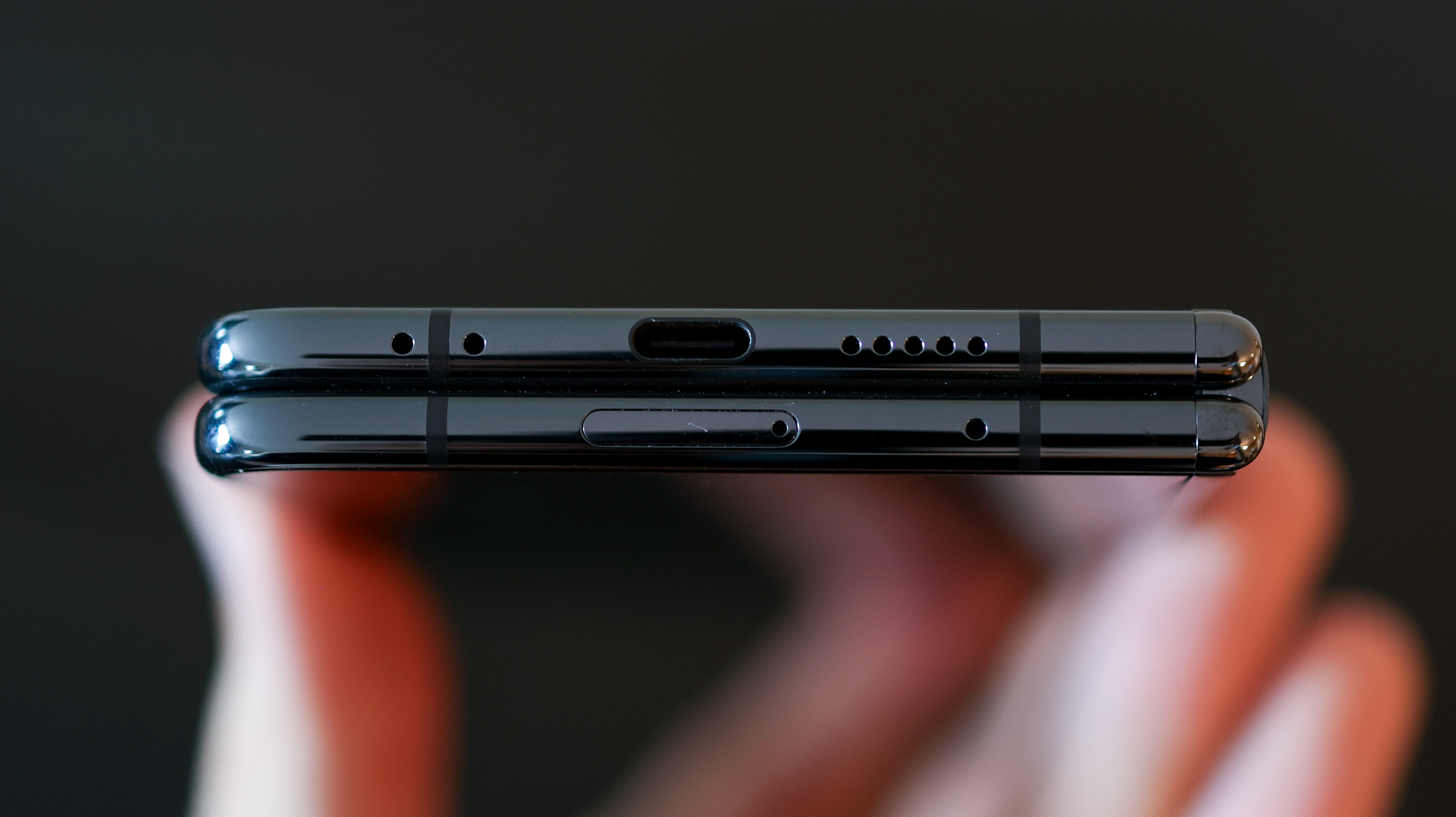
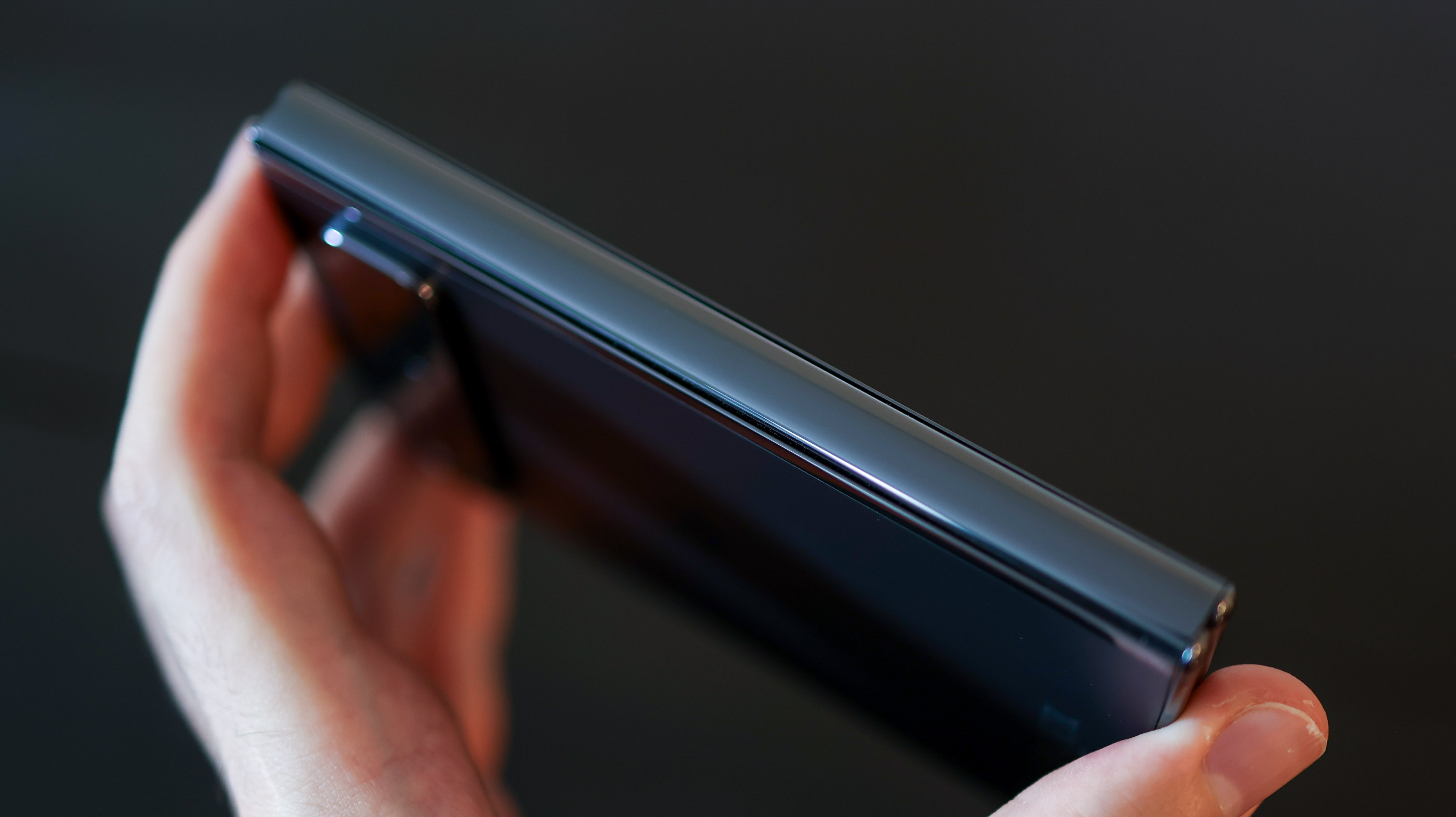
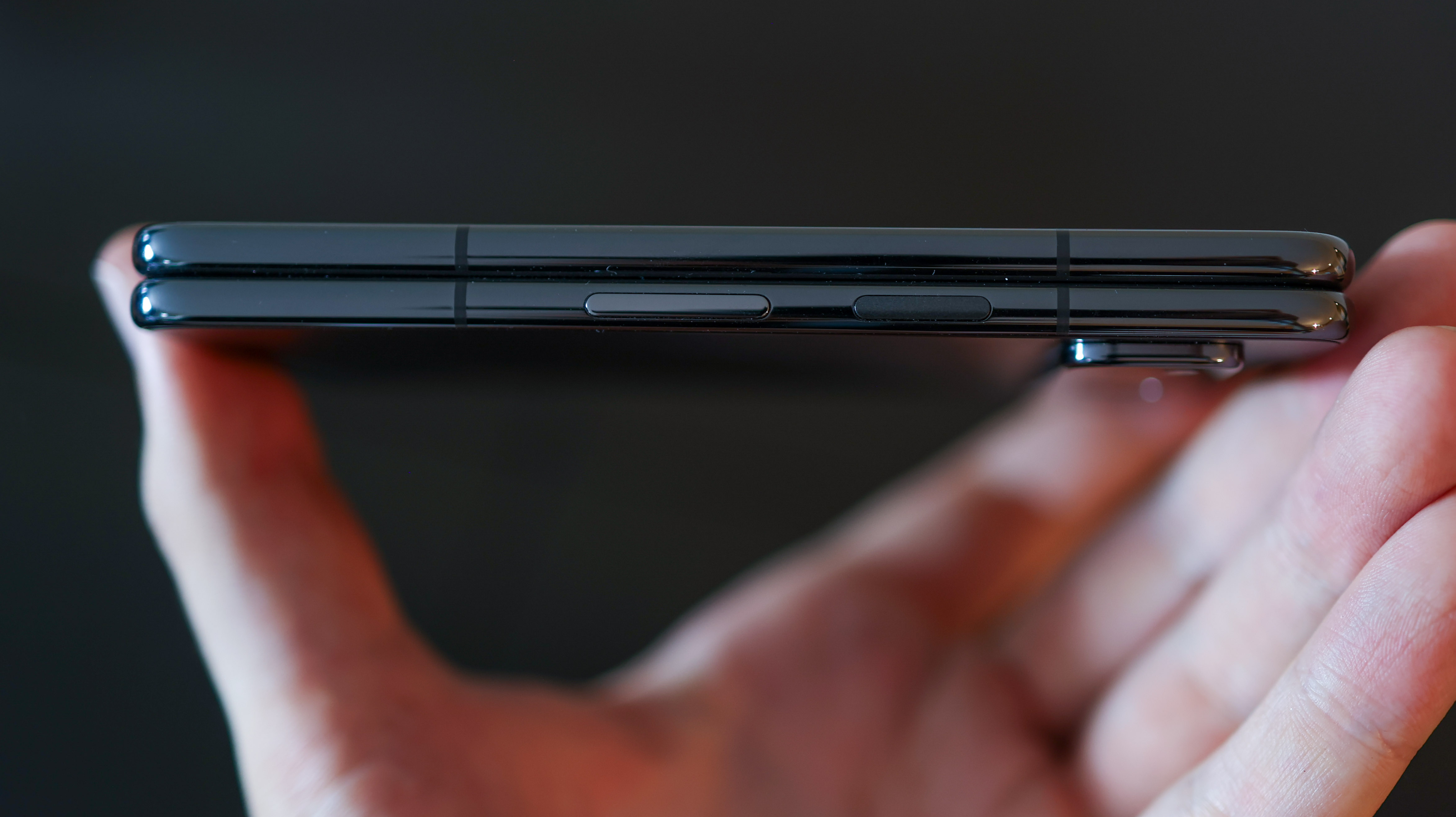

Unfold it, and the phone's appeal starts to creak. Despite a very sturdy hinge mechanism, when you open it out, the Pixel Fold doesn't open totally flat – a limitation of the Honor Magic Vs as well. So while phones like the Huawei Mate X3 and Samsung Galaxy Z Fold 4 can feel like mini tablets – perfectly flat – the Pixel Fold always feels like a foldable.
The other questionable design decision is the generous bezel above and below the main, foldable screen. Practically speaking, this plays host to the selfie camera, it gives a thumb a little ledge to rest on below the display while also serving up an area to apply pressure when opening and closing the Pixel Fold.
Though the strips above and below the screen make sense, they don't stop the main display from looking a little dated when set against the Z Fold 5 or Mate X3's low-on-bezel big screens.
One final point on the Pixel Fold's hinge: throughout its range of motion, it feels solid. At virtually any angle between open and closed, it holds its form, securely sitting in place.
While this isn't a guarantee that the phone is more durable than the competition, it doesn't hurt, and matched with IPX8 water resistance, helps the Pixel Fold feel like the hardiest foldable around.
Google Pixel Fold Review: Screens
The Pixel Fold's cover screen is the phone's highlight. Its 5.8-inch size might sound small, but thanks to its ample width, it's comfortable to use. With a resolution of 1080 x 2092, it's sharp with over 400 pixels per inch, and its 17.4:9 aspect ratio means it's well-suited to playing back 16:9 video.
Being an OLED screen with a 120Hz refresh rate, the cover screen is also punchy and smooth, and with support for HDR content, as well as a beaming 1200 nits brightness, it's easy to see outdoors.


When you open the Pixel Fold, you get a large, 7.6-inch screen with similarly zingy OLED tech, HDR10 support, and a smooth 120Hz refresh rate. Brightness caps out at 1000 nits in high brightness mode, and it's very responsive.
OLED screens have a lot of excellent characteristics like deep, inky blacks and the capacity for vibrant, saturated colors. Their main limitation is a slight blue tint when you aren't looking at them head-on. Given the Pixel Fold doesn't fold flat, its slight bend matched with this innate OLED property means your picture's colors can look a little compromised.
On the plus, no other foldable does as good a job of playing-back 16:9 video, which is the format most shows on Netflix are. Part-folded, there's virtually no letterboxing, and as the picture displays in just half the screen, there's no color-warping in this scenario.
The speakers also sound good when the phone's rested on a surface. Hold the Pixel Fold sideways in both hands, though, and the speakers are all too easy to cover up. A limitation that impacts gaming and video playback.
Google Pixel Fold Review: Camera specs
If you're interested in a foldable, you'll have to dial down your camera requirements when compared to picking up a top-tier flagship camera phone, and even the mighty Pixel line pares things back for the Fold.
The main camera is a 48MP resolution, 1/2-inch sensor with an f/1.7 aperture lens and a 25mm focal length, and OIS. With phones like the Xiaomi 13 Pro sporting a 1-inch sensor, and even the affordable Pixel 7a packing a 1/1.73-inch sensor, Google's relying on its intelligent photo processing to do the heavy lifting based on the camera spec alone.
Where the Pixel Fold flexes is its zoom. While the 10.8 MP resolution and 1/3.1-inch sensor won't win any awards, its 112mm telephoto reach – which equates to a five times optical zoom is impressive, with OIS helping it along.
The ultra-wide camera on the Pixel Fold is a modest, fixed-focusing module with a 10.8 MP, 1/3-inch sensor and an f/2.2 aperture.
There are also two selfie cameras on the Pixel Fold, an 8MP punch-hole front camera in the cover screen and a 9.5MP camera above the main display.
Video on the Fold is captured at up to 4K at 60fps, and Google loads up its typical suite of modes. That means Night and Portrait, the Long Exposure mode introduced last year, and Panorama, Photo Sphere, and Google Lens.
The Pixel Fold does support RAW capture at 12MP, but no manual mode, so if you want to go beyond the standard camera features, you'll need a manual camera app like Adobe Lightroom for Mobile.
Google Pixel Fold Review: Camera
The Pixel Fold's camera is built on the back of Google's powerful photo processing. For years, Google was launching phones like the Pixel 4 XL and Pixel 5, with middling hardware, saved by masterfully balanced image handling. The Fold's primary and ultra-wide cameras take things back to that era of Pixel.
Take a photo on the main camera, and there's every chance it will look good. It won't be loaded up with mountains of detail, so you can't crop it too much, but it will look balanced. You can see examples below across all three cameras taken on a slightly overcast day – all three look pleasing.
Google's saturation and sharpening are more subdued than Samsung's. Set against photos taken on the Galaxy Z Fold 5, therefore, the Pixel Fold's shots look more realistic, and high-detail areas like foliage end up looking less crunchy.
While the ultra-wide and main cameras aren't worlds apart across Google and Samsung's phones, the Z Fold 5 has a slightly wider field of view, while the Pixel's telephoto range gives Google's phone extra reach.
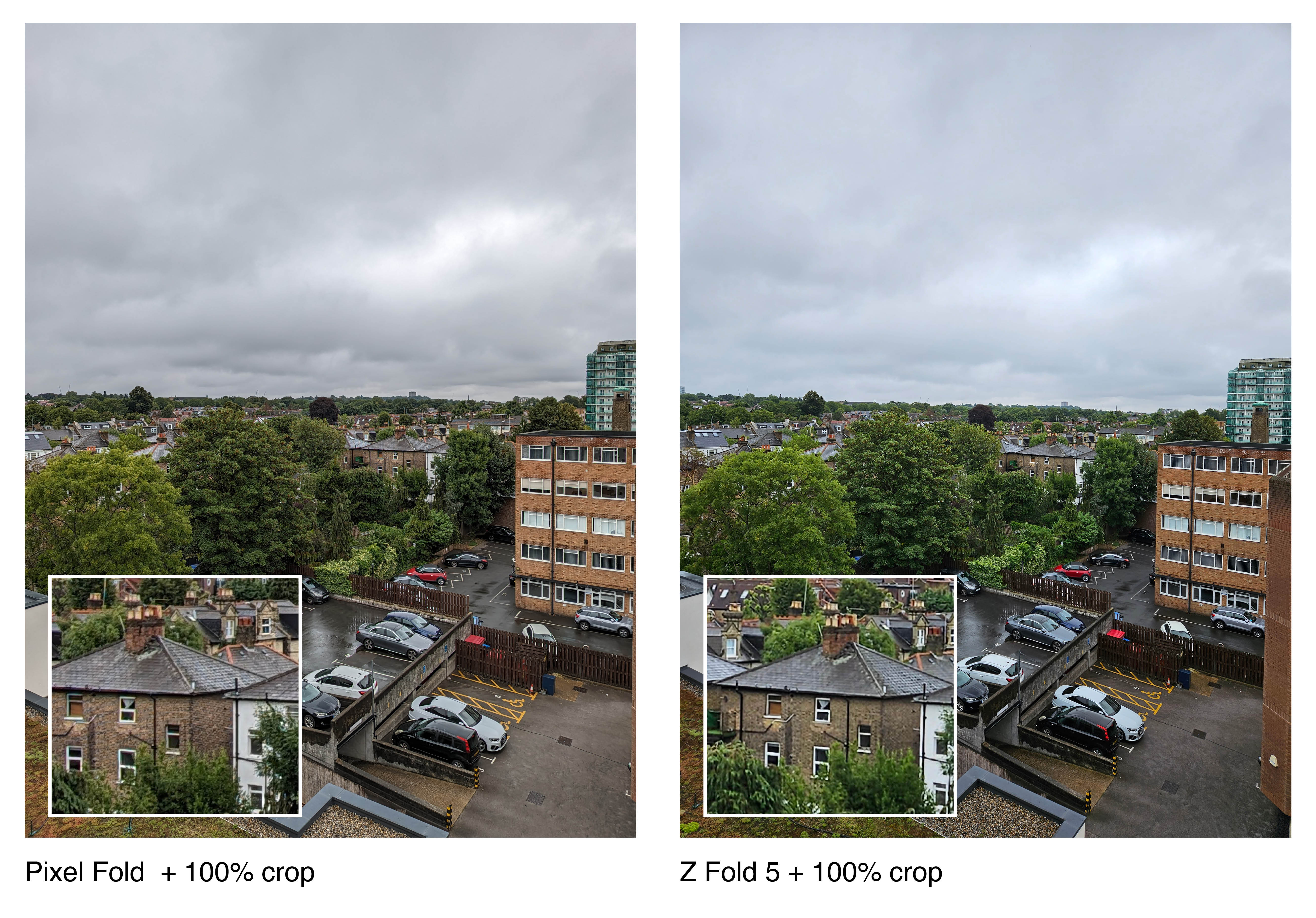
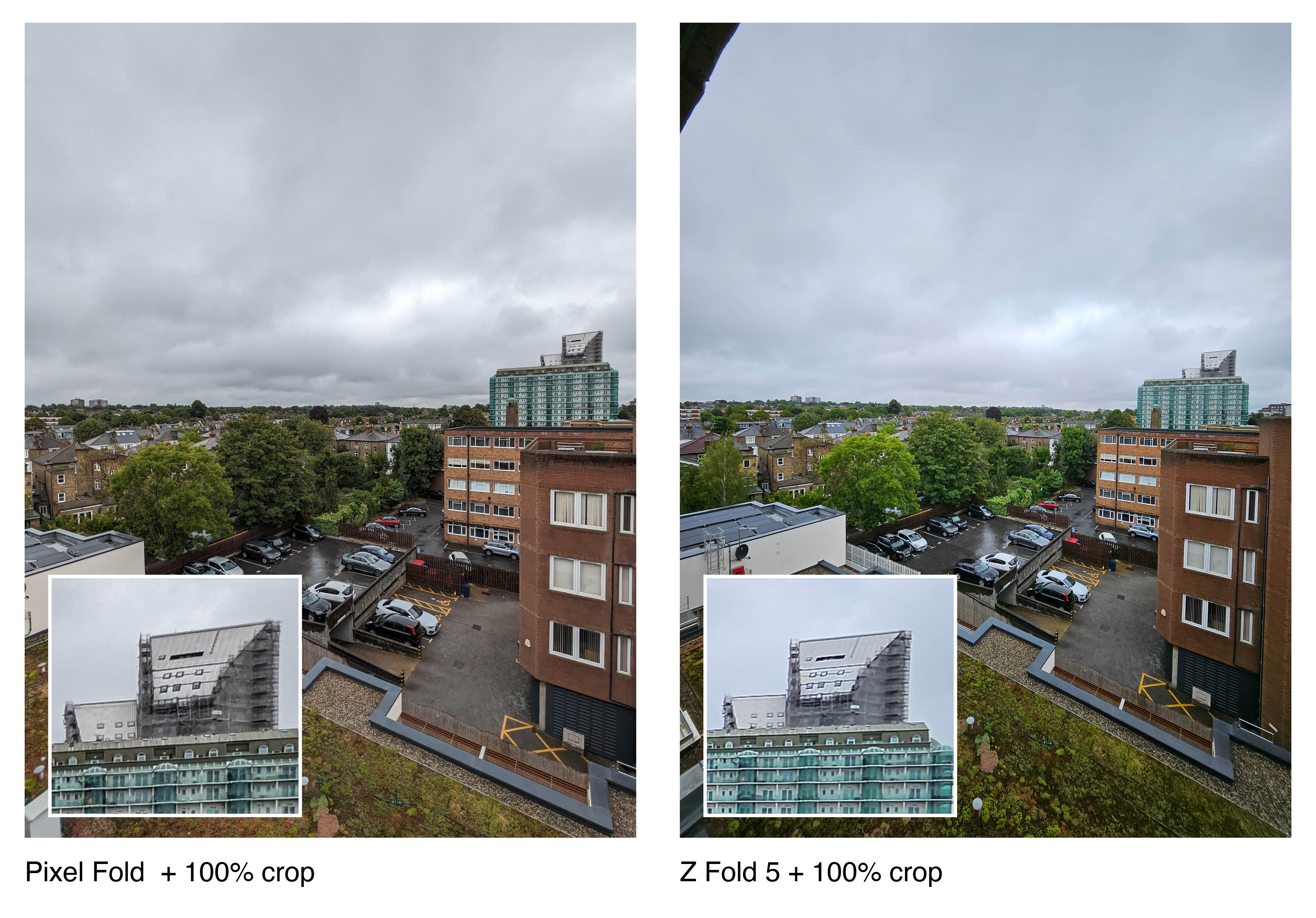
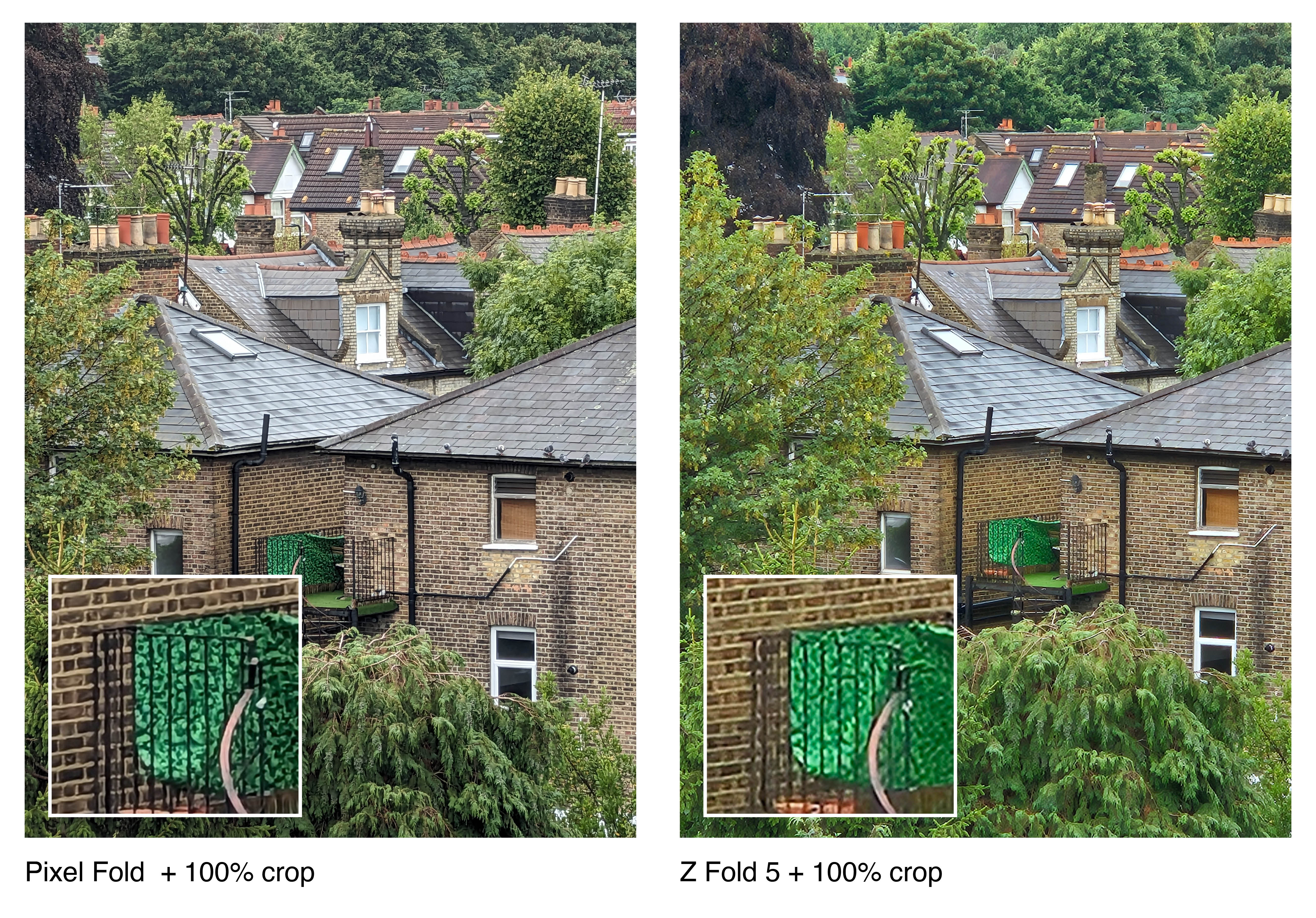
For enthusiasts who want to shoot in manual mode, labour over shots and edit photos, Samsung's Camera RAW and Pro modes actually best the Pixel Fold's camera system. After all, the Z Fold 5's primary camera hardware is better if you're happy bypassing its auto mode.
Point and shooters who want an easy life across all three cameras will likely love what the Pixel's serving. As you can see below, pet shots are handled well, backlit scenes are given the HDR effect, and Google's NightSight also makes sure a still subject looks sharp even when the lights drop.
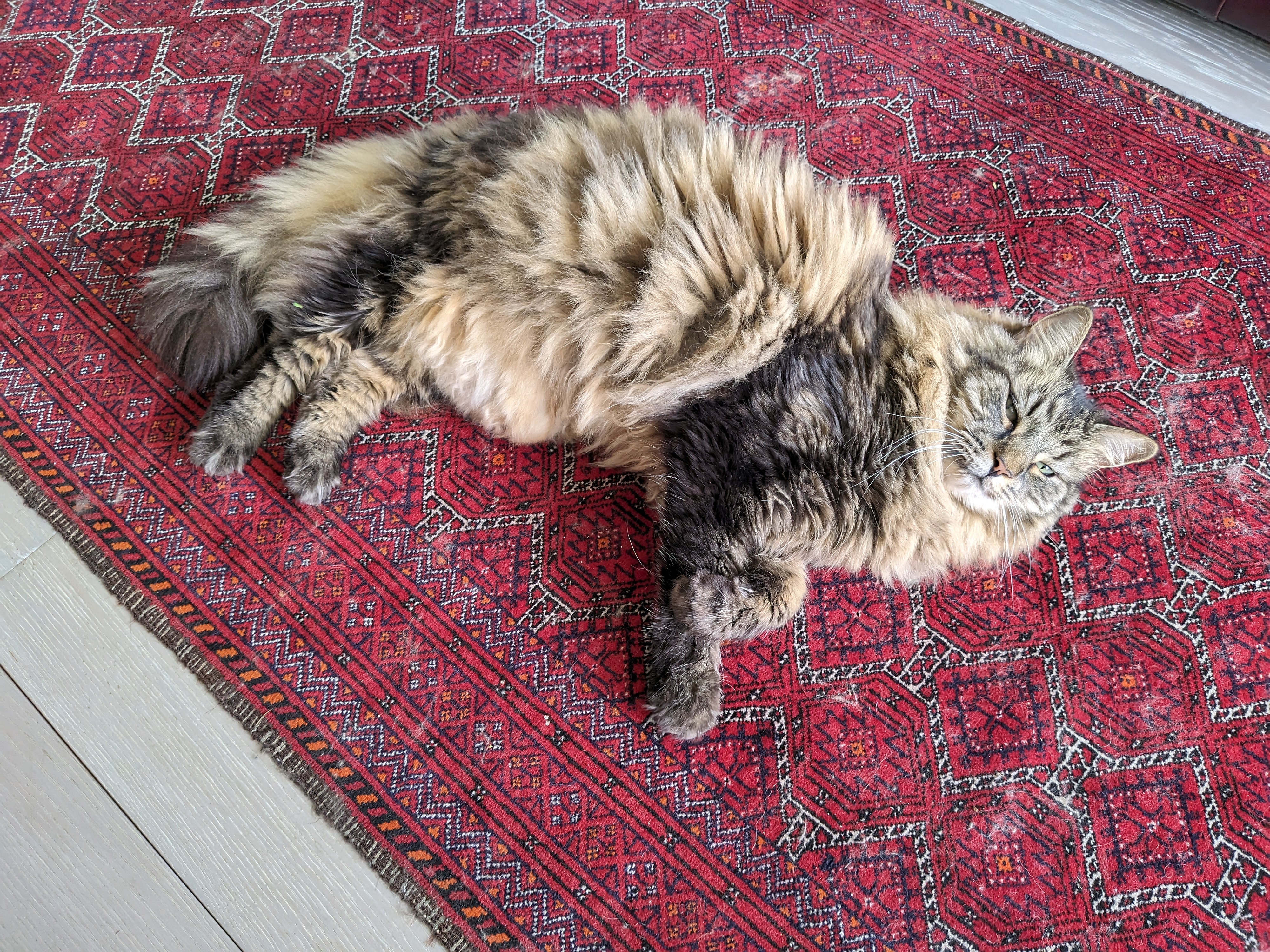
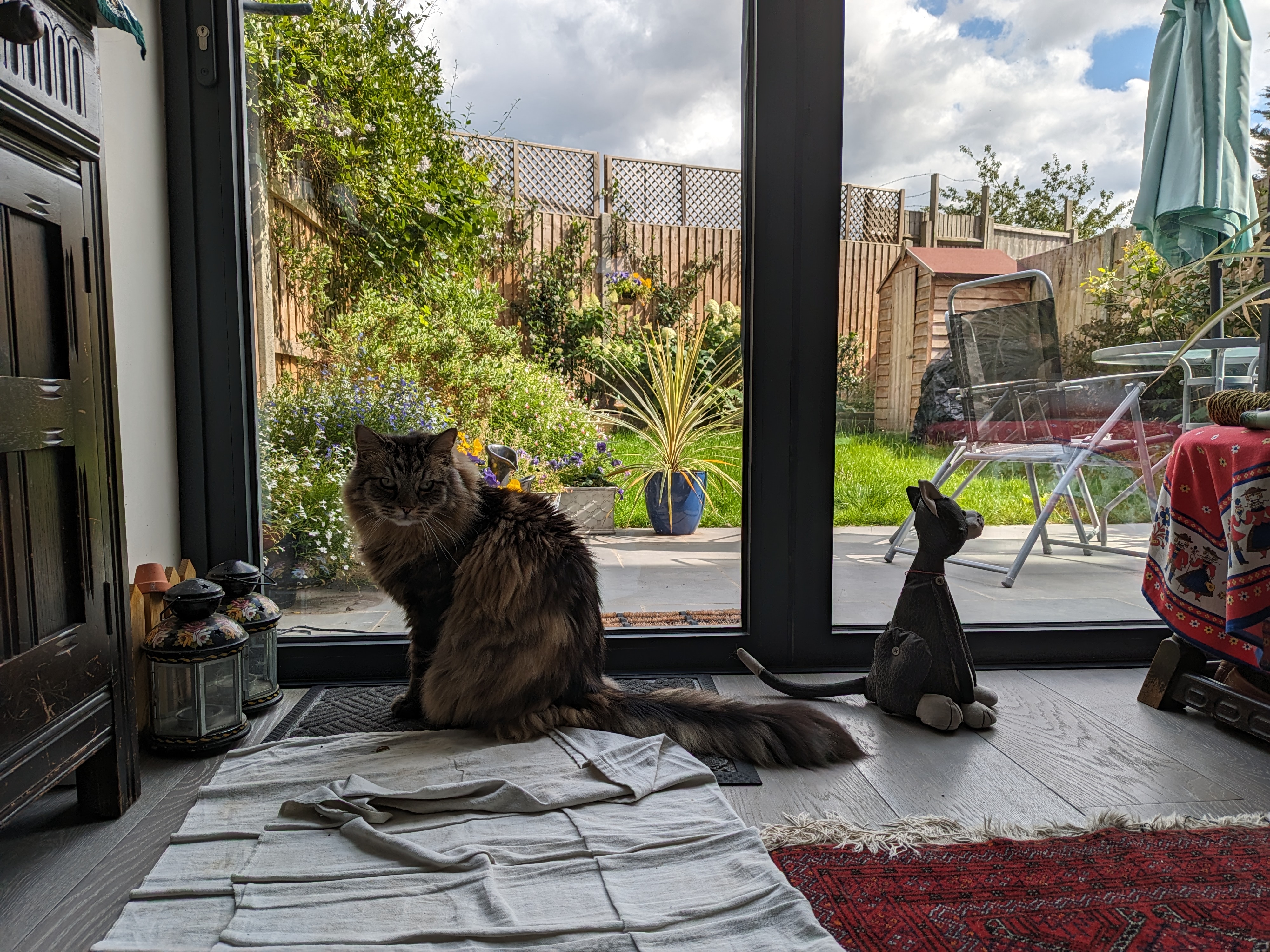
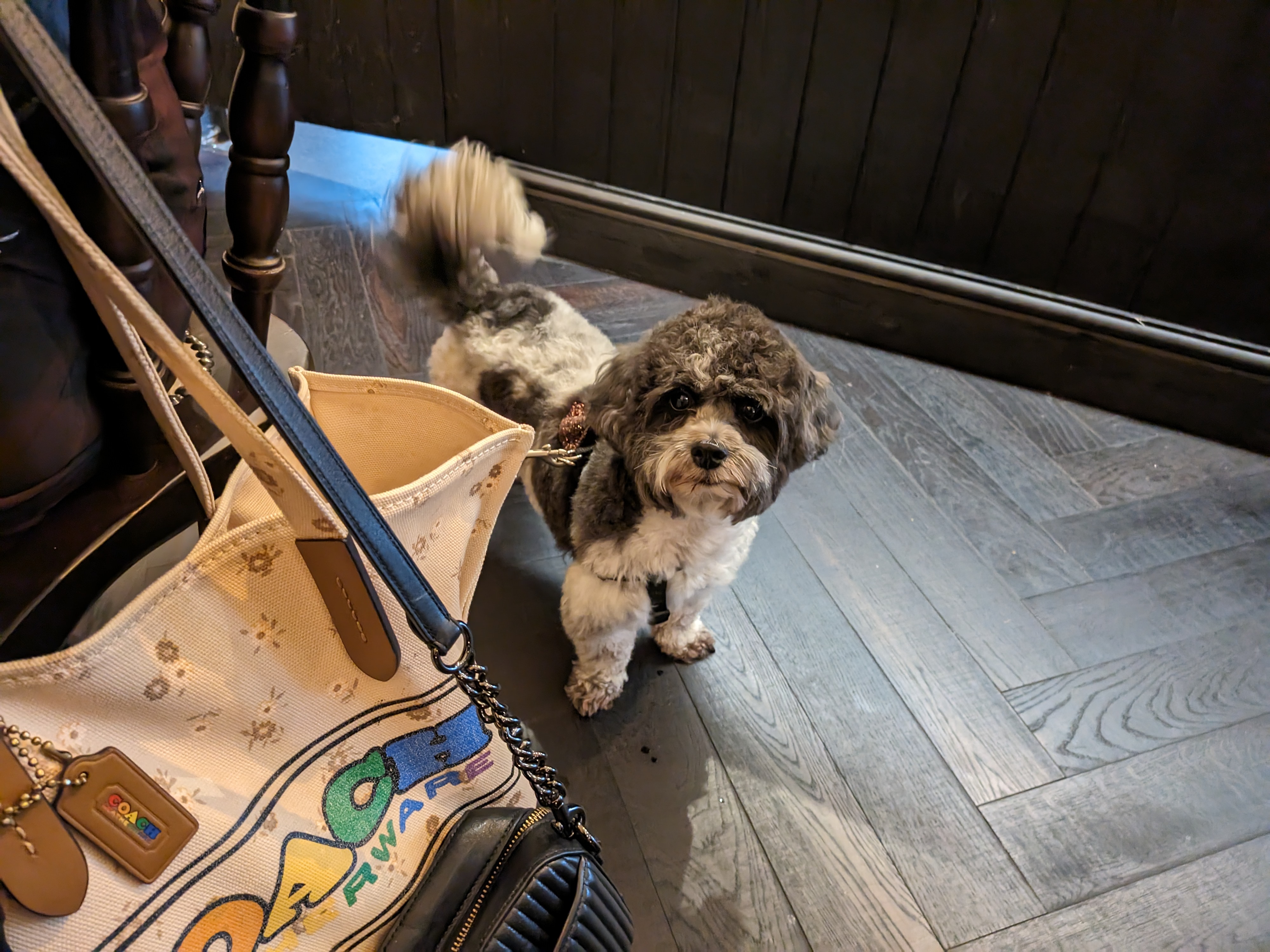
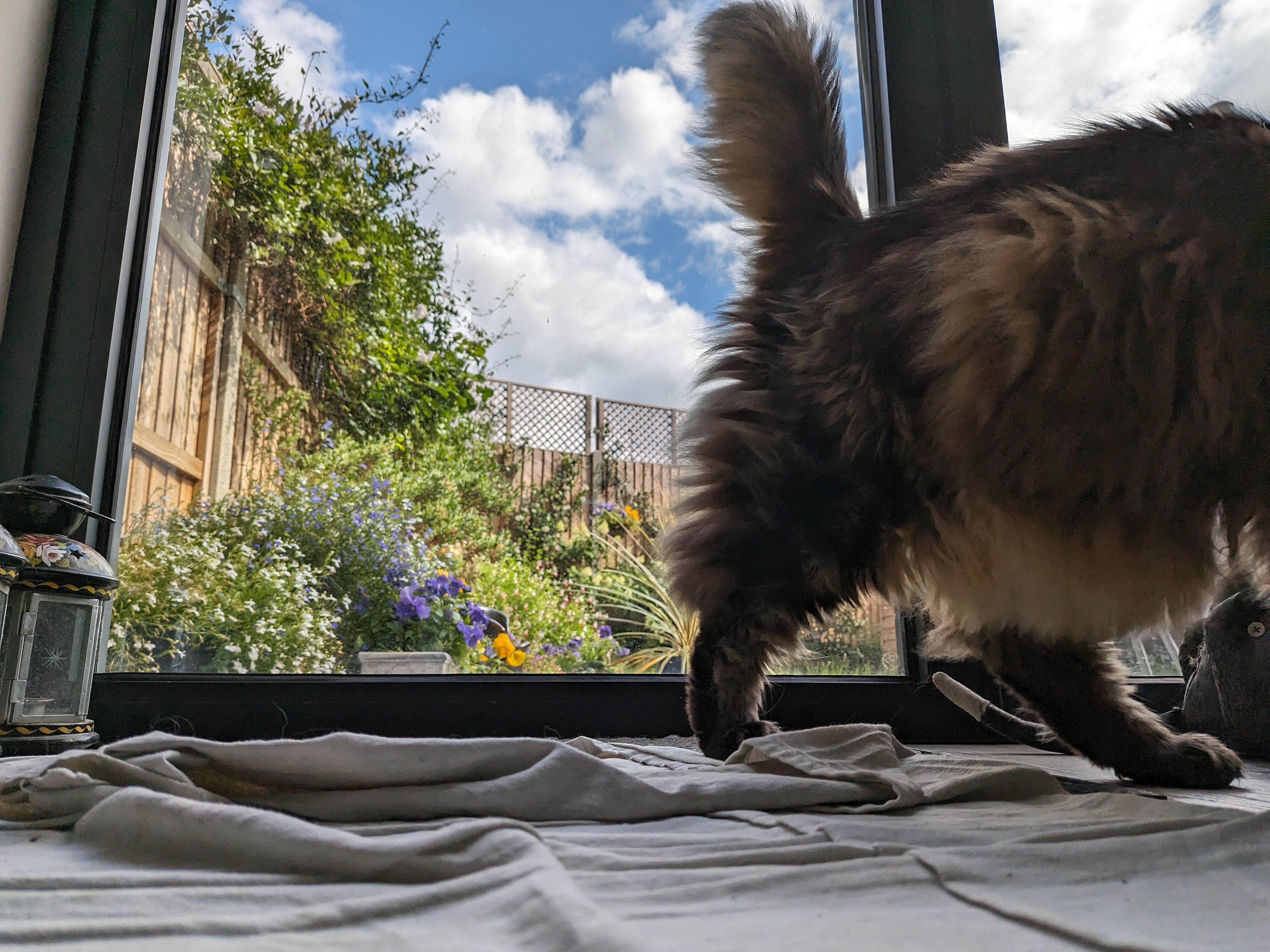
We also enjoyed getting creative with the telephoto camera. While it doesn't have a telemacro near focus length, the periscope camera can take high-impact shots at around a meter away, as demonstrated below, pulling up a natural-looking, modest background blur.
Google's long exposure mode, which works across all three rear cameras and the selfie cameras, is also a lot of fun, with handheld results impressing. You can see a few shots taken in Liverpool Street Station, London, below.
NightSight is also excellent, including support for RAW capture and selfies, which, when rested on a surface, can produce some mighty-looking photos that are very fun to edit.

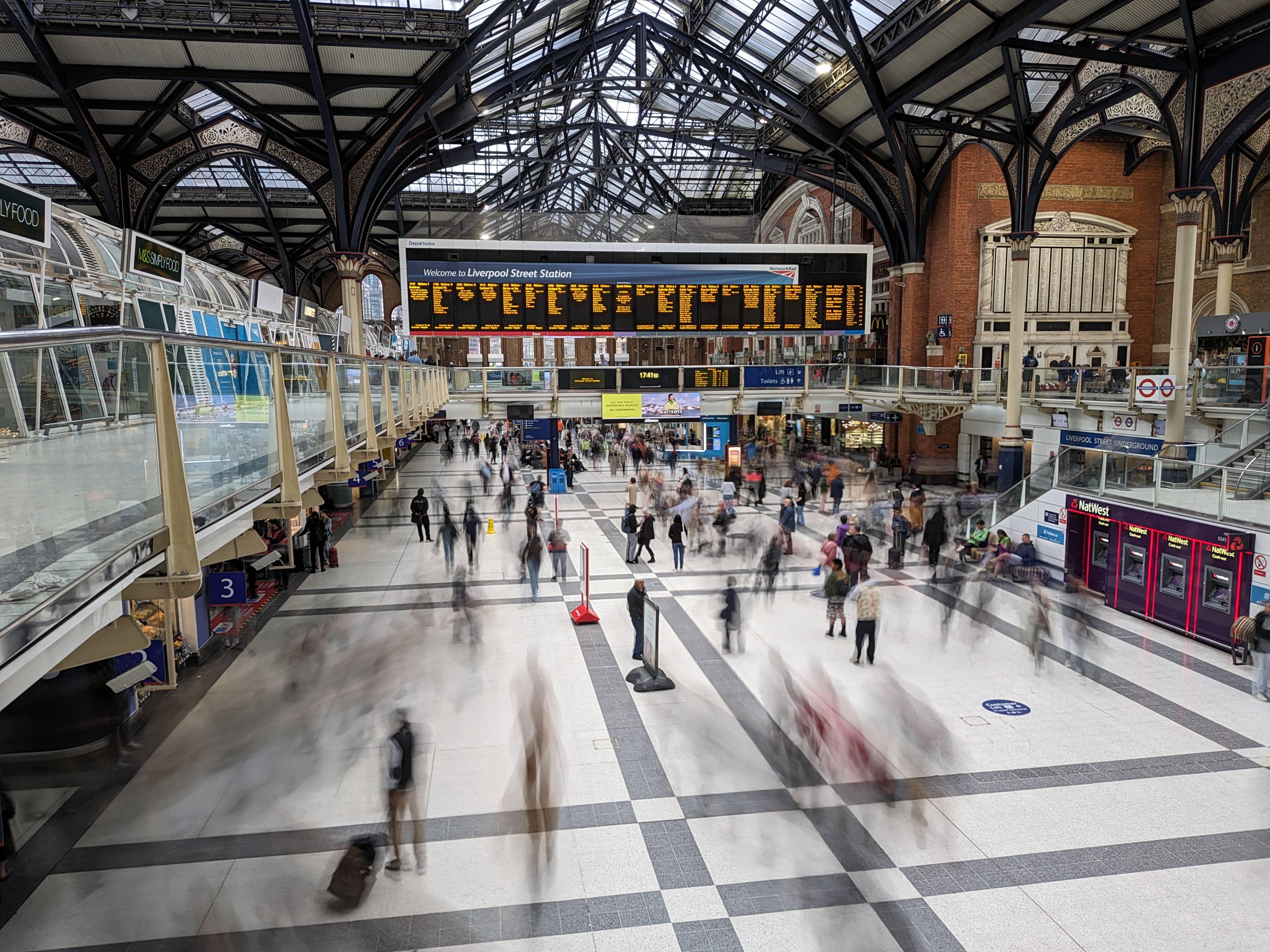
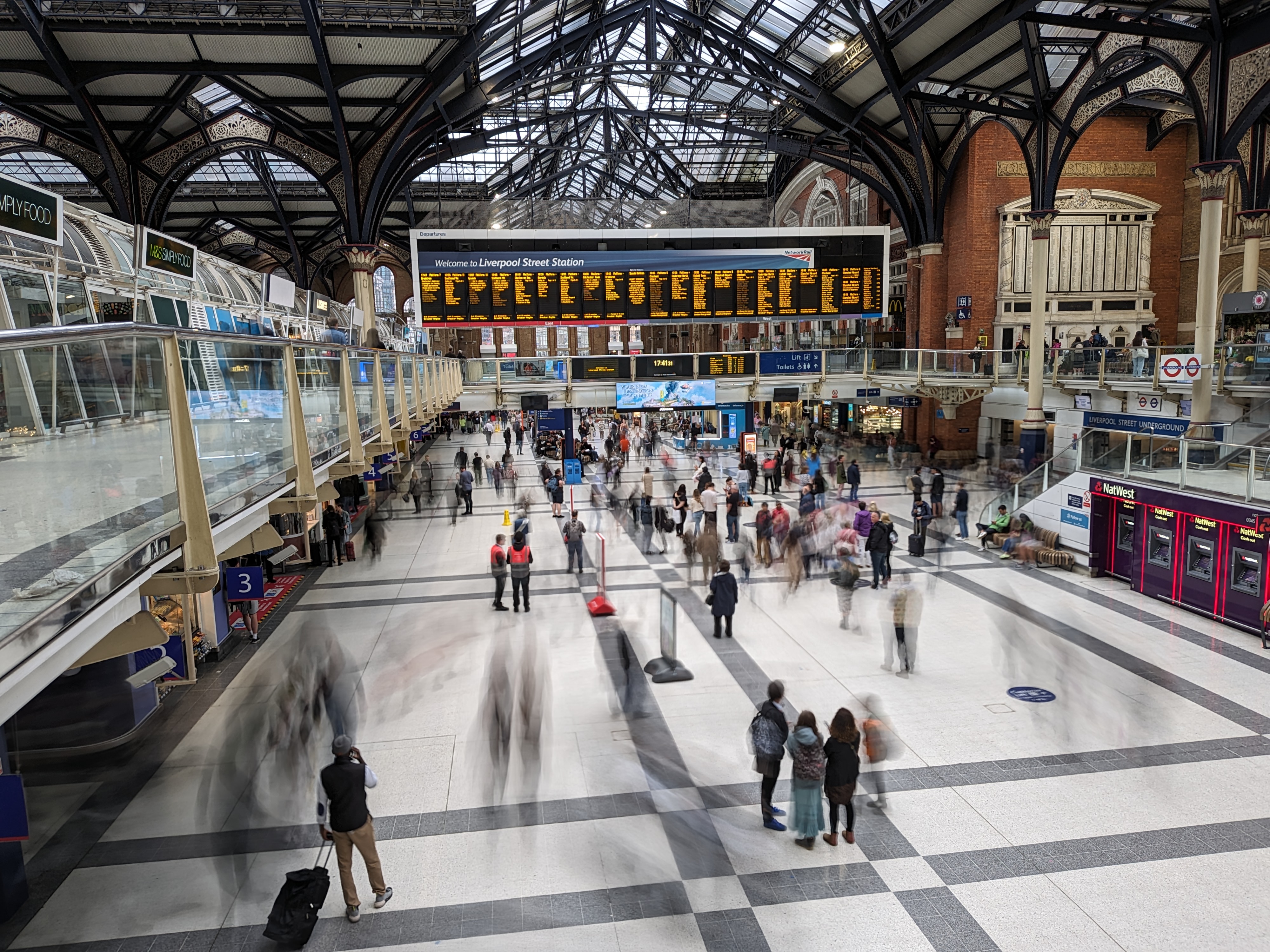
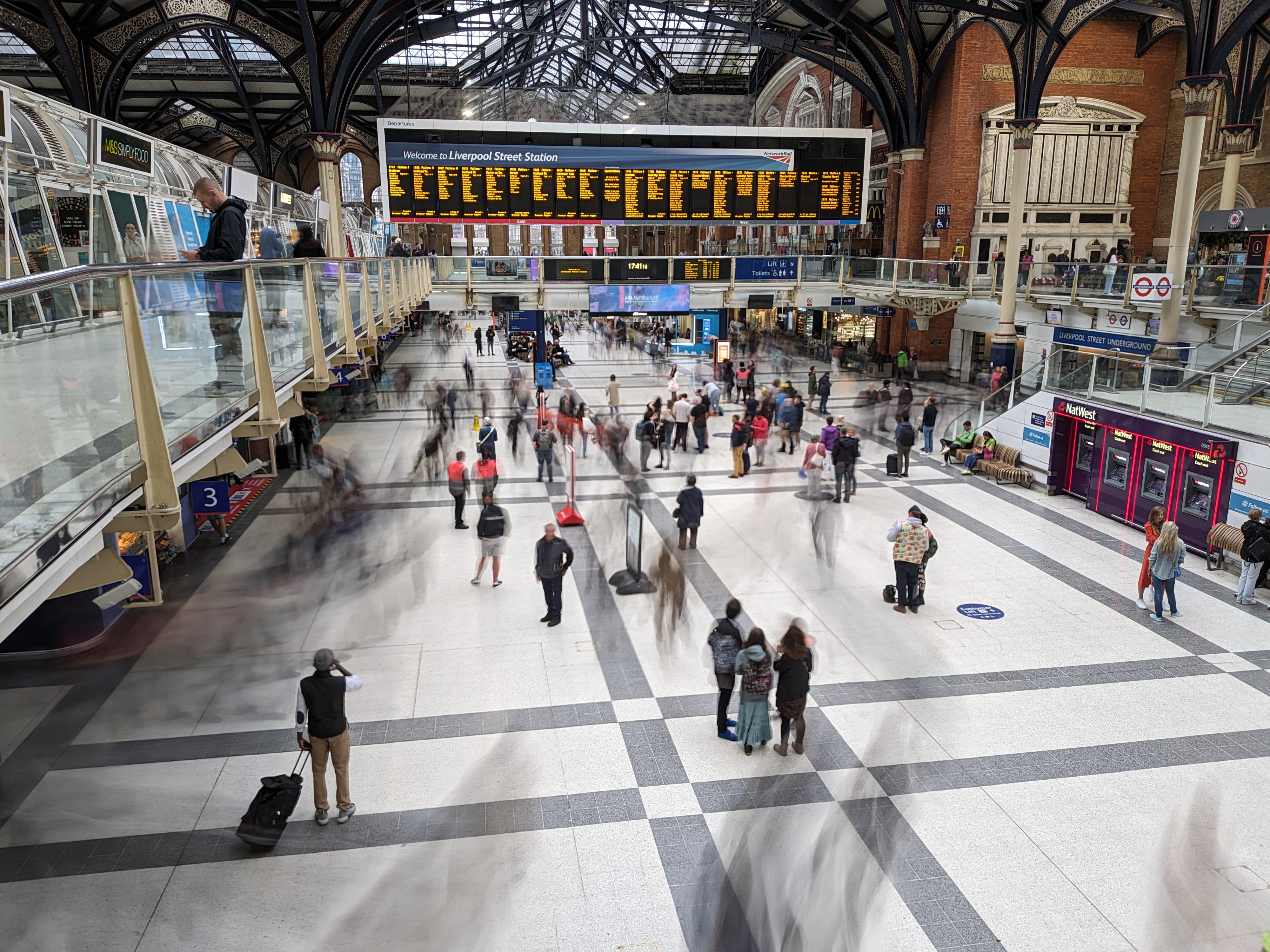
The Pixel Fold's flexible form also makes it great for video capture. While it doesn't shine in poorly-lit scenes, in bright environments, it shoots high-resolution, sharp video in both SDR and HDR, and the zoomed-in content from the periscope camera looks great, particularly when the part-folded phone is rested on a surface.
We hoped Google would have swooped in with some inspired ergonomic genius to take advantage of the folding screens, but the Pixel Fold piles in what we've already seen before on Samsung phones.
The cover screen can preview shots taken on the main camera when the phone's open for some cracking selfies, and when half-folded, the camera interface separates to give you a segmented view.
Viewing pictures when the Pixel Fold is part-folded turns the bottom half of the screen into a touchpad, so you can navigate and pinch into your snaps without obstructing the view.
Google Pixel Fold Review: Additional features
The Pixel Fold is the first foldable to run with Google's stock Android experience. This is a big deal because every spin on Android, from Samsung's OneUI on the Galaxy S23 Ultra to MIUI on the Xiaomi 13 Ultra is built atop Google's Android foundation. So it's interesting to see Google's first forray into a foldable interface borrow so many interface features from Samsung's Fold line.
Open up the Pixel Fold, and its home screen is similar to that of the Pixel Tablet, with a taskbar at the bottom. Open an app, and the Taskbar minimizes, leaving a line at the bottom of the screen. Swipe the line up, and the taskbar appears again, and from here, you can drag an app into view for split-screen multitasking.
With a maximum of two apps running on-screen at once, the Pixel Fold falls way behind Samsung's Galaxy Z Fold 5, an eight-app-multitasking machine. The fact it doesn't support floating windows is also noteworthy.
We actually like the Pixel Fold's simplicity. It's never complicated – the same can't be said of Samsung's OneUI – and it feels intuitive. What's frustrating is that it doesn't always get it right. Some apps aren't designed for a split-screen view, and even when single-handling one app at a time, the inner screen gives you a range of app sizes, as illustrated below.

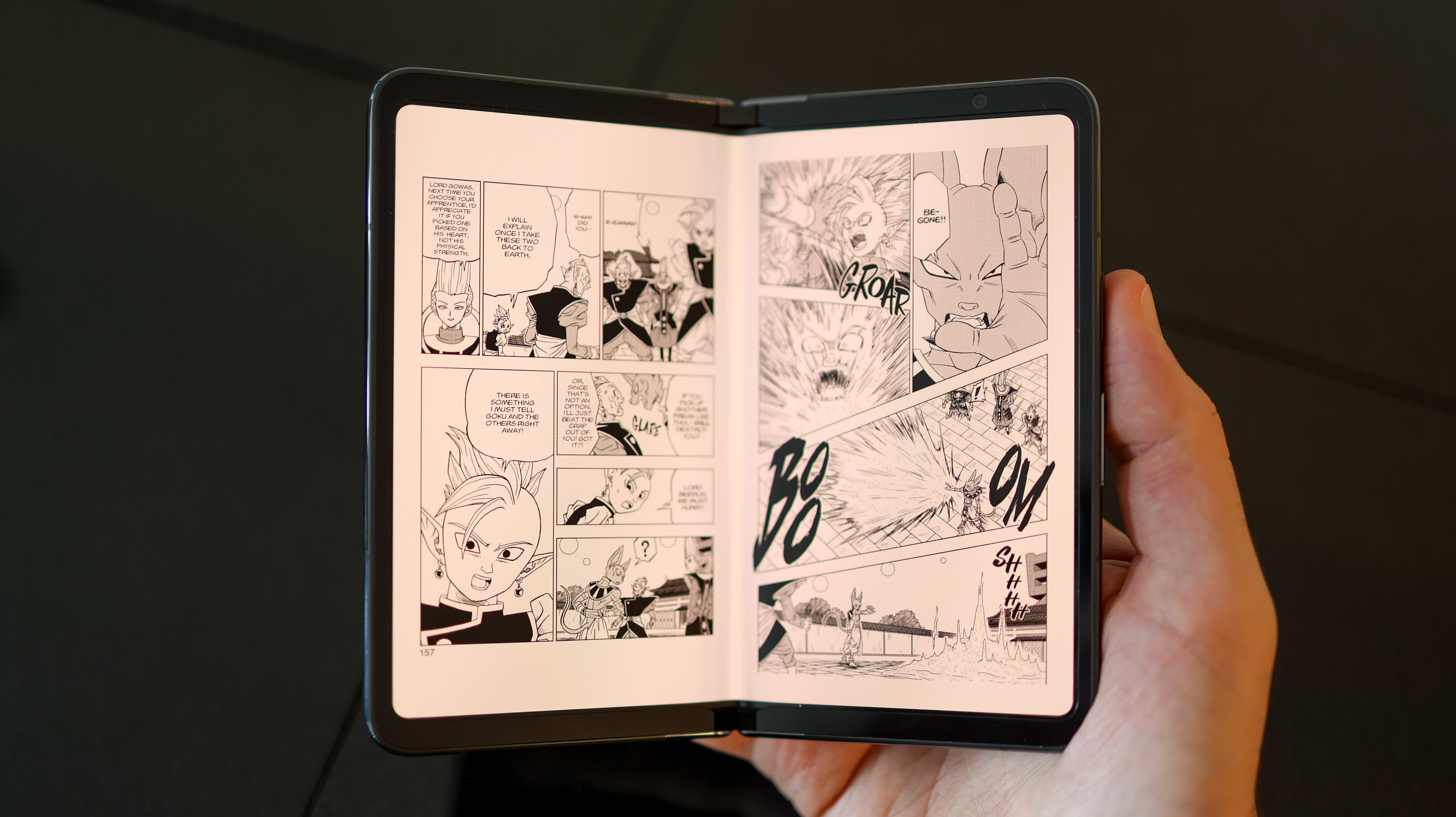
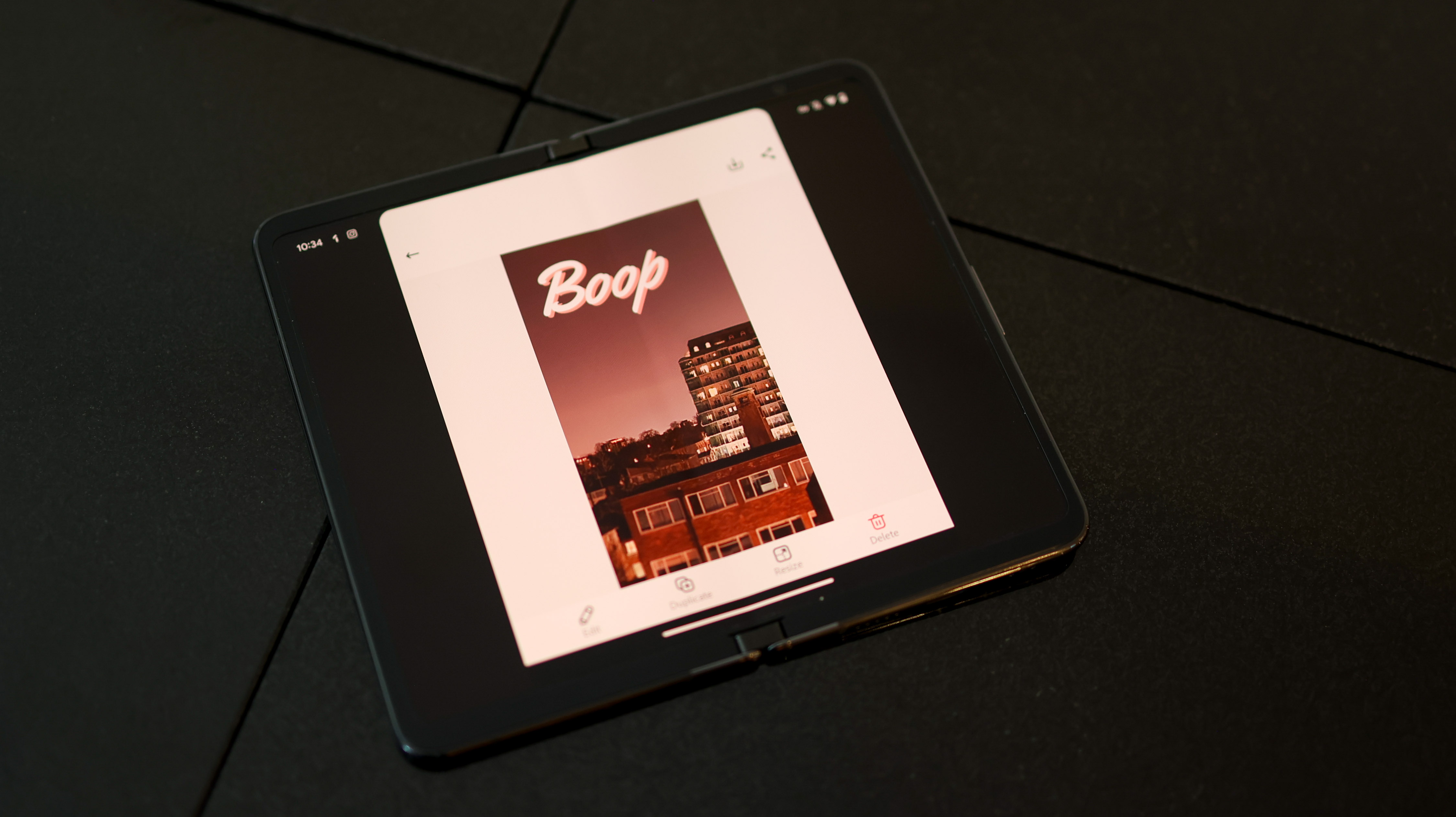
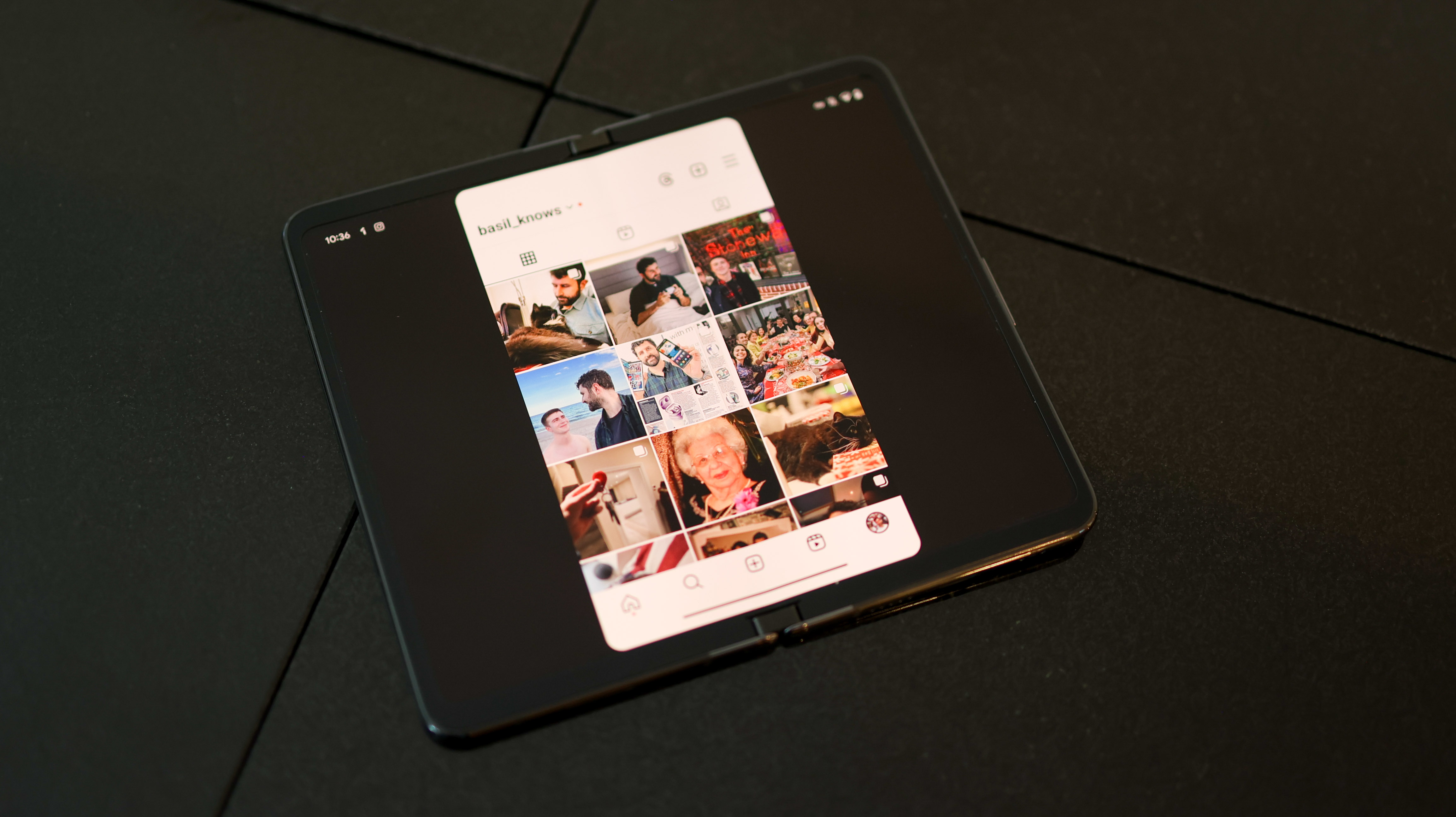
No interface issues we experienced with the Pixel Fold were a dealbreaker; this is a more optimized and enjoyable foldable to use than the Honor Magic Vs, for example. But Google's foldable does shine a light on how fragmented Android apps are, designed to work on thousands of devices, but failing to be perfectly optimized for the one made by Google itself.
The Pixel Fold runs with the same internals as the Pixel 7 Pro. That means a Tensor G2 chip with 12GB RAM. This chip ran warm when we tested the Pixel 7 line, and it runs warm on the Fold, specifically in the first week with the phone.
Heavy bouts of hotspotting and video capture were the main culprits, but if you hate the idea of a warm-to-hot phone, then you might struggle with the Fold, even if the heat didn't seem to impact performance noticeably in our time with it.
With 256GB or 512GB storage, there should be enough room for most people, despite the lack of an SD card slot. The phone's 4821mAh battery comfortably lasted a full day in our time with it.
With PD3 fast charging, the Pixel Fold powers up at around 21W speeds. You won't get a power adapter in the box, but if you charge it up with one of the best GaN chargers, like the UGREEN 140W GAN charger we tested it with, you'll hit a full charge in around 90 minutes. The phone also supports wireless charging too.
Google Pixel Fold Verdict
With foldable competition hotting up in 2023, the Google Pixel Fold is a welcome entrant in the book-style category.
On the one hand, the Pixel Fold is a very first-gen device. It doesn't unfold completely flat, is a costly leap of faith for customers, and there are plenty of mainstream Android apps that don't look great on it – or any unfolded folding phone (or Android tablet, for that matter). This last point isn't Google's fault per se, but it's worth noting that even the most stock Android foldable of them all doesn't fix this Android-wide issue when viewing some apps on a big screen.
In the Pixel Fold's favor, it's an IPX8-rated foldable with a very sturdy hinge – so durability is where it needs to be, at least on paper. Its cameras also benefit from the Pixel treatment, so while its hardware isn't best-in-class, its photos are consistently balanced. Most noteworthy, the Pixel Fold's periscope camera is a welcome win over its main competition, the Galaxy Z Fold 5, and its shooting modes are very user-friendly.
No book-style foldable is easy to recommend right now for anyone of modest means. They're all too expensive. But the fact a phone like the Pixel Fold even exists should be a reassurance to fans of the genre.
Google getting behind the folding phone category means support at an operating system level. Along with foldable display tech and component prices dropping, this should entice developers to optimize their apps and ultimately create a solid foldable experience.
The result of this ground-level support will eventually highlight Android's greatest strength – more choice – exactly what the operating system has come to stand for by contrast to iOS.
Back to the Pixel Fold, and ultimately, that's what it too represents – more choice – and for many, the first viable alternative to the Samsung Galaxy Fold line, even with its imperfections.
Read more: If the Google Pixel Fold doesn't do it for you, check out the other best flip and fold phones
Basil Kronfli is a freelance technology journalist, consultant, and content creator. He trained in graphic design and started his career at Canon Europe before moving into journalism. Basil is also experienced in video production, independently running the YouTube channel TechEdit, and during his time at Future, he worked alongside the Digital Camera World team as a senior video producer.
